

Carnival Magic
The Carnival Magic sails out of Norfolk and is one of the huge Dream-class ships.
Features of the Magic include WaterWorks aqua park, Ocean Plaza food & entertainment area, and the Lanai wraparound promenade deck. This is the ship that had the first ropes course at sea in SportSquare, the first Cucina del Capitano Italian restaurant, the first RedFrog Pub, and the first Guy's Pig & Anchor Bar-B-Que Smokehouse. You'll also enjoy Serenity Adult Only Retreat, Lip Sync Battle, Clue: the Murder Mystery, Dive-In Movies, Mega Deck Party, White Hot Night Party, Guy's Burger Joint, BlueIguana Cantina and Alchemy Bar.
Kids will enjoy Seuss at Sea, Zumbini, Hasbro the Game Show, Make It with Michaels, Camp Ocean, Circle C, Club O2, Green Eggs & Ham Breakfast, and Towel Animal Theater.
Read a Carnival Magic cruise review . Watch a video tour of the ship .
See our calendar of Carnival Cruises from Norfolk VA for departure information.
Cruise Maven
Cruising the World One Port at a Time
Carnival Magic Moves to Norfolk in 2021
By: Sherry Laskin · Published on February 21, 2020
Carnival Cruise Line announced that Carnival Magic will cruise from Norfolk, Virginia beginning in May, 2021.

Details about Carnival Magic Moving to Norfolk
At a press conference in Norfolk, the city’s mayor and Carnival’s Senior Vice President of Nautical and Port Operations, made the official announcement that Carnival Magic would offer seasonal cruises from the Half Moone Cruise Center through 2025.
Carnival Magic can accommodate 3,690 passengers and will be the largest cruise ship to sail from Norfolk. In total, there will be 12 cruise departures with close to 50,000 passengers passing through the port, beginning in 2021.
The City of Norfolk agreed to invest in improvements to their Half Moone Cruise Center in order to accommodate Carnival Magic and other large ships. The city will also add a new boarding bridge to speed up embarkation and debarkation, plus other upgrades to the terminal.
“Norfolk has been a valued partner for nearly 20 years, and we’re delighted to expand upon this relationship with this five-year contract that will bring exciting new choices from the Half Moone Cruise Center,” said Christine Duffy, president of Carnival Cruise Line. “Our cruises from Norfolk have been very well received by our guests, and this new agreement speaks volumes about our confidence in growing this market.”
What’s onboard Carnival Magic

When Carnival Magic was launched in 2011, the ship featured many of what’s become signature venues throughout the fleet. This includes the Caribbean-themed RedFrog Pub, the Cucina del Capitano family-style Italian restaurant. SkyCourse, in the above photo, is family-friendly and a challenging ropes course, suspended 150-feet above the ocean.

There’s the complimentary children’s programs offered for three age groups, the luxurious Cloud 9 Spa, the Ocean Plaza indoor/outdoor dining and entertainment promenade plus Serenity, the adults-only retreat. Of course there’s the WaterWorks aqua park with two massive slides, a tipping bucket and a kiddie splash zone.
Carnival Magic Cruise Itineraries from Norfolk
When Carnival Magic relocates for cruises from Norfolk, seasonal itineraries will range from four- to eight-days.
Itineraries include:
- May 16 and June 5: six-day cruises to Freeport, Nassau and the private Bahamian island of Half Moon Cay
- May 22 and 31, June 11, and Oct. 4 and 30: five-day voyages featuring Freeport and Nassau
- May 27: four-day long weekend sailing to Bermuda returning on Memorial Day
- Sept. 29: five-day voyage to Bermuda
- Oct. 9: eight-day cruise to Grand Turk, San Juan and St. Thomas
- Oct. 17: six-day voyage to Bermuda
- Oct. 23: seven-day sailing visiting Grand Turk, Half Moon Cay and Nassau.
Following a spring 2021 refurbishment in Cadiz, Spain, Carnival Magic will sport Carnival’s signature features found on almost the entire fleet.
Related Articles from Cruise Maven
Carnival triumph becomes carnival sunrise after renovation, how much you’ll pay (or not pay) for room service, cheers carnival’s beverage program explained, get cruise maven’s newsletter.
Get Our Latest Posts With Cruise and Travel Tips, News and Reviews!
About Sherry Laskin
I'm the editor and creator of CruiseMaven.com, a solo traveler cruising the world without flying. I hope my articles and photos entertain, advise and inspire you to travel the world without flying. Take a breath...stop for a local meal and a glass of wine along the way.
Related Posts

July 28, 2020 at 9:10 pm
Hi Adrienne, Thank you for taking the time to write. I agree with you and hope we all come out of this with all of what you listed. Sherry
July 28, 2020 at 12:12 pm
I am beyond excitement to read this announcement! i am ready to get on board!!!!! I am praying that the world will be over the virus and we will all come through this time of “pausing” ; healthy, appreciative , and kinder people.
May 15, 2020 at 9:15 pm
Hi Barry, Sorry, I’m not a travel agent. Thank you for asking.
May 13, 2020 at 10:02 am
Do you have a 7 day cruise to Bermuda from Norfolk, Va.?

Norwegian Spirit Massive $100 Million Refurbishment Complete

Become an Insider!
Get Cruise Maven's newest articles, travel advice, cruise reviews, destinations and more.
For over twenty-five years, I've been traveling the world without flying, by only river ships, ocean ships, road trips and trains. I hope to inspire you to travel slow, explore new places, experience different cultures and taste new cuisine. Follow my solo travel adventures across the USA, North America and the world!
Places to Go
- Sitka, Alaska
- Monte Carlo
- Mount St. Helens
- Florence, Italy
- Paris, France
Cruise Reviews
- Radiance of the Seas
- Crystal Serenity
- HAL Eurodam
- Viking Star
- Alaskan Dream Cruises
- Pique Sauce
- Jalapeño Poppers
- Guy’s Straight-Up Burger
- Oatmeal Chocolate Chip Cookie
- Pesto Sauce
River Cruises
- Viking Grand European
- AmaWaterways Christmas Markets
- Columbia and Snake Rivers
- AmaKristina Rhine River
- CroisiEurope Deuce France
Copyright © 2024 Cruise Maven · Theme by 17th Avenue
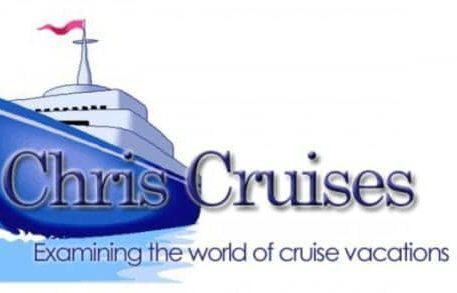
Chris Cruises
Cruise news, tips and inside information.

RIVER CRUISING
SLOW TRAVEL
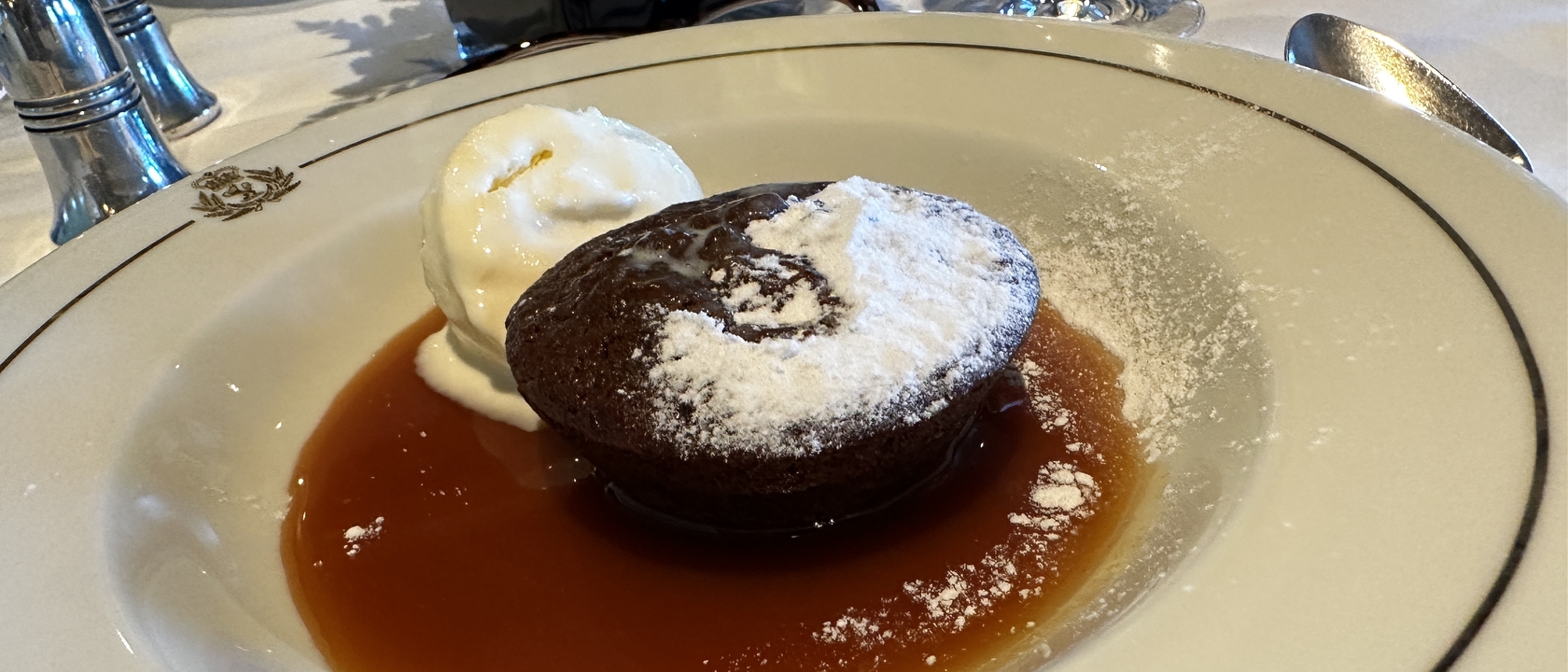
CULINARY WONDER AROUND THE WORLD

OCEAN CRUISING
VOYAGE AROUND THE WORLD
Carnival Magic Sailing From Norfolk
Posted on May 19, 2023 May 16, 2023 Author Chris Owen
Carnival Cruise Line began its longest deployment yet in Norfolk, Va., on May 14, 2023. The cruise line’s ship, Carnival Magic, is set to welcome 100,000 guests embarking through Norfolk’s Half Moone Cruise Center this season. The ship will operate a series of 26 cruises, ranging in length from four- to 10-days, through Oct. 27, 2023.
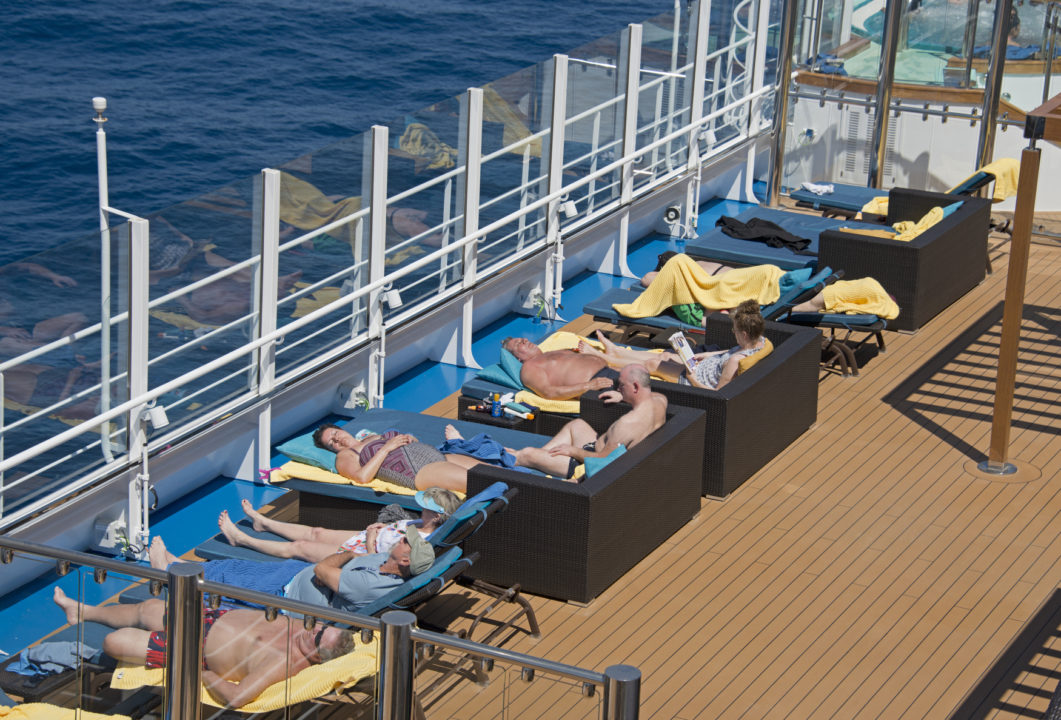
Carnival Magic is a large cruise ship that can accommodate up to 4,724 guests. The ship features a wide variety of accommodations, a multitude of dining options, Carnival’s signature entertainment, the Cloud 9 spa, water slides, and the Serenity adult-only retreat.
The ship’s first cruise from Norfolk departed on May 14 and was a seven-day itinerary visiting Nassau, Bimini, and Freeport in the Bahamas. Throughout the season, Carnival Magic will also visit other ports in the Bahamas, as well as Bermuda and Caribbean destinations.
Carnival Cruise Line is one of the world’s largest cruise lines. The company operates a fleet of 23 ships that sail to destinations around the world. Carnival Magic is one of the company’s most popular ships and is known for its fun and festive atmosphere.
The deployment of Carnival Magic in Norfolk is a significant event for the city. The cruise line is expected to bring a significant economic boost to the area, and the ship’s arrival is sure to be a popular attraction for residents and visitors alike.
If you are interested in booking a cruise on Carnival Magic, you can visit the Carnival Cruise Line website or call 800-CARNIVAL.

Carnival Magic Kicks Off 2023 Summer Program in Norfolk
- May 14, 2023
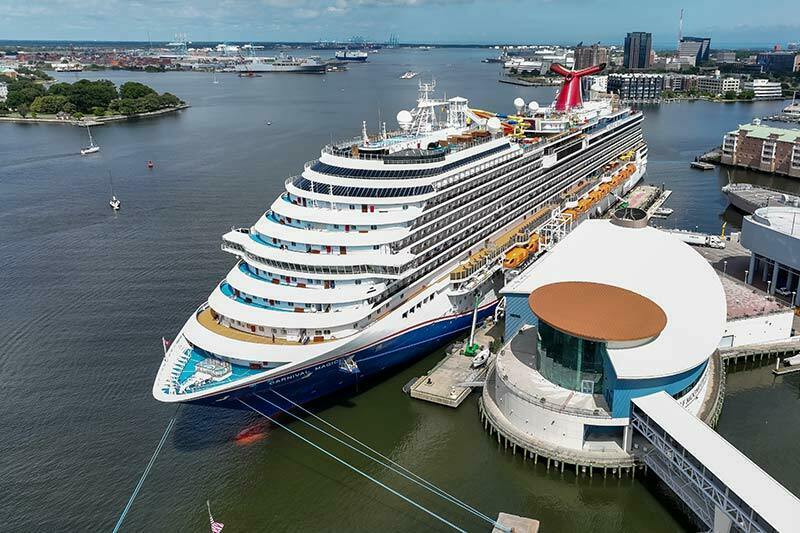
The Carnival Magic arrived in Norfolk today to kick off its 2023 summer program.
Repositioning from Port Canaveral, the Carnival Cruise Line vessel is now set to offer different itineraries out of the Virginia homeport.
Extending through October, the program features a series of five- to ten-night cruises to ports in Bermuda, the Bahamas, the Caribbean and Canada & New England.
For the first cruise of the season, the Carnival Magic heads south on a weeklong itinerary to the Bahamas.
In addition to two full days at sea, the six-night cruise features visits to Freeport, Bimini and Nassau – where it is set to remain docked until 9PM.
After offering similar cruises over the coming weeks, the 3,650-guest vessel adds longer Caribbean itineraries to its schedule starting in mid-June.
One of the itineraries sail for ten nights and includes visits to five different destinations in the Eastern Caribbean: Grand Turk, San Juan, St. Thomas, St. Maarten and Amber Cove.
Also being offered during the season are six-night cruises to Bermuda, as well as a special eight-night itinerary to Canada & New England in October.
Also sailing roundtrip from Norfolk, the voyage features stops in Portland, Saint John, Halifax and Sydney.
Part of Carnival Cruise Line’s Dream Class, the Carnival Magic was built in Italy and debuted in 2011.
Cruise Industry News Email Alerts
- Breaking News

Get the latest breaking cruise news . Sign up.
54 Ships | 122,002 Berths | $36 Billion | View
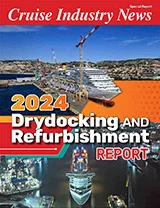
Highlights:
- Mkt. Overview
- Record Year
- Refit Schedule
- PDF Download
- Order Today

- 2033 Industry Outlook
- All Operators
- Easy to Use
- Pre-Order Offer
- Advertising
- Cruise News
- Magazine Articles
- Quarterly Magazine
- Annual Report
- Email Newsletter
- Executive Guide
- Digital Reports
Privacy Overview

- Cruise News
Carnival Returns to Norfolk, Virginia After 3 Year Absence

Doug Parker
- May 16, 2022
Carnival Cruise Line has returned to Norfolk, Virginia for the first time since 2019. On Sunday, Carnival Magic set sail for a six-night Bahamas cruise becoming the largest ship to depart from the city’s Half Moone Cruise Center.

To commemorate the special day, Carnival welcomed guests with a “Back to Fun” event that included a ceremonial ribbon-cutting that cleared the way for guests to enter the terminal’s new gangway, built to accommodate larger ships, and board Carnival Magic as the ship’s crew welcomed them aboard.
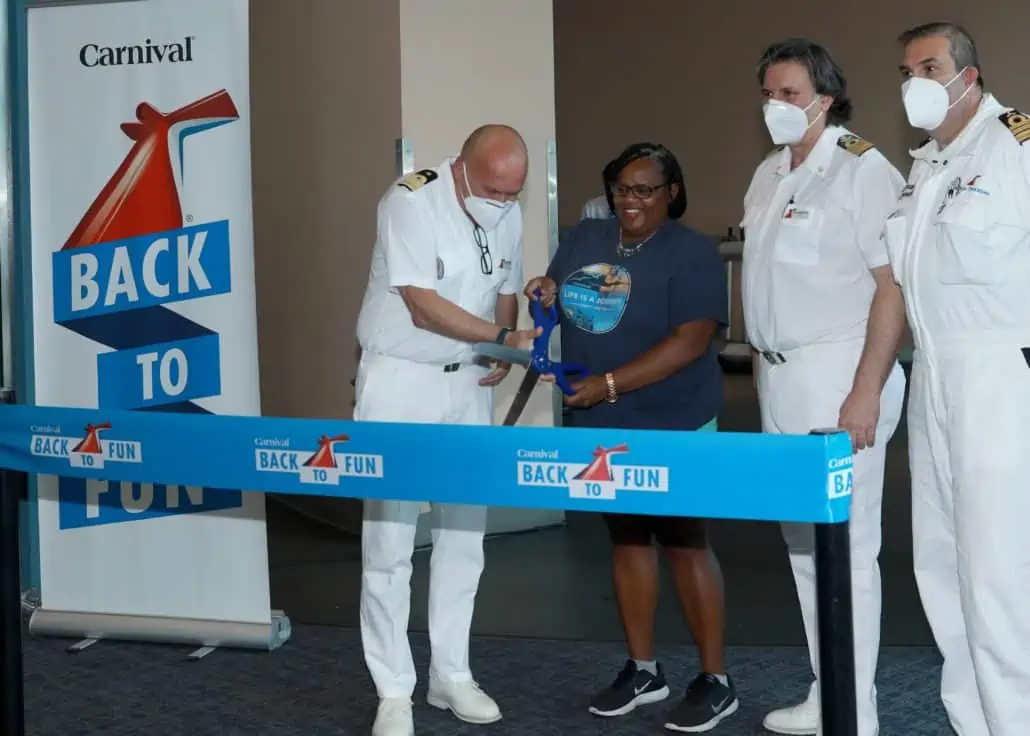
“Norfolk is a key seasonal homeport for us and we are excited to have Carnival Magic based in Norfolk for our guests to enjoy and to support the local economy,” said Christine Duffy, president of Carnival Cruise Line. “I want to thank the City of Norfolk for its ongoing commitment to Carnival and the enhancements it made to the beautiful Half Moone Cruise Center, so that we could bring the larger Carnival Magic here for our restart.”
This week’s cruise will include stops in Nassau, Half Moon Cay, and Freeport.
In total, 11 voyages with various itineraries will depart from Norfolk this summer and fall, visiting destinations in Bermuda, The Bahamas, Puerto Rico, Turks and Caicos, and the U.S. Virgin Islands.
Carnival Magic was launched in 2011 and after its European season, it debuted in Galveston, Texas. It recently received the new red, white and blue hull design running the entire length of the 1,004-foot-long ship, which has become a trademark feature of the Carnival fleet paying homage to maritime tradition and patriotic colors.
Carnival became the first major cruise line to return its full 23-ship fleet to guest operations on May 2 with Carnival Splendor ’s sailing from Seattle.
Norfolk played an instrumental part during the cruise industry shutdown by letting Norwegian Cruise Line dock three of its ships while they were out of service. Select Norwegian itineraries out of New York City call to the port towards the end of the voyage.
Recent Posts
Help needed after cruise passenger with dementia goes missing in cozumel, alaska cruise port will enforce passenger limits starting in 2026, passenger reportedly jumps from cruise ship in front of family, carnival vista review 2024 + cruise news [podcast], share this post, related posts.

Port Clears Cruise Ship to Leave After Identifying 69 Fake Visas

Hydration Economics: Carnival Hikes Bottled Water Prices by 25%

Bringing you 15 years of cruise industry experience. Cruise Radio prioritizes well-balanced cruise news coverage and accurate reporting, paired with ship reviews and tips.
Quick links
Cruise Radio, LLC © Copyright 2009-2024 | Website Designed By Insider Perks, Inc
Carnival Magic - July 22, 2023

Click For Interactive Map

July 22, 2023
July 22 - 30, 2023

Carnival Magic
Carnival Cruise Lines

8 Night Eastern Caribbean
from Norfolk, Virginia
The July 22, 2023 cruise on the Carnival Magic departs from Norfolk, Virginia. On this 8 Night Eastern Caribbean sailing, the ship will visit a total of 4 different cruise port destinations, including its departure port. The Carnival Magic sets sail on a Saturday (July 22, 2023) and returns on a Sunday (July 30, 2023).
The Carnival Magic was built in 2011 and is amoung Carnival's 26 ships in it's fleet. The Carnival Magic is included in the cruise line's Dream Class. In the cruise ship stats below you'll find the Carnival Magic vs all other Carnival ships.
All Itineraries

Norfolk, Virginia's theaters and performing arts have made it the Cultural Capital of the South. Attractions include world-class museums, the world's largest battleship, and 155 acres of botanical gardens. Not to mention fabulous shopping, dining and golf. With such a diverse collection of things to do, Norfolk is the ideal spot for just about anyone who wants more from their vacation.
Norfolk, Virginia's theaters and performing arts have made it the Cultural Capital of the South. Attractions include world-class museums, the world's largest battleship, and 155 acres of botanical...

Take advantage of the many on board activites during your day at sea. Explore the Carnival Magic Deck Maps and make sure to view our list of Ship Venues and Features. You'll have more than enough to fill your day!

Half Moon Cay
Spend the day on your own private island, courtesy of Holland America. Sun, swim, or sail around this beautiful island as you enjoy your very own day in the sun! The fishing's great, but so is the parasailing and snorkeling so you have some decisions to make! And don't forget the Bahamas style barbecue!
Spend the day on your own private island, courtesy of Holland America. Sun, swim, or sail around this beautiful island as you enjoy your very own day in the sun! The fishing's great, but so is the...

Grand Turk Island


Home » Cruise » Carnival Cruise Line » Carnival Magic » Carnival Magic’s 2023 Sailings from Norfolk Now Open for Reservations
Carnival Magic’s 2023 Sailings from Norfolk Now Open for Reservations
Carnival Magic’s 2023 sailings from Norfolk are now open for reservations with itineraries to Bermuda, the Bahamas, and Canada/New England.
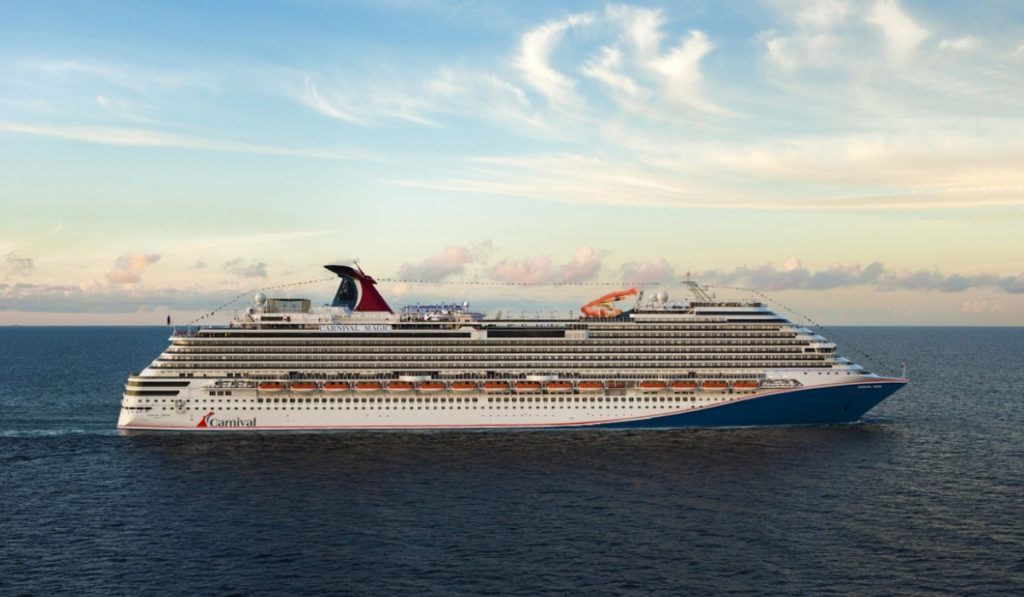
Share this post:
May 20, 2021
Reservations opened today for a series of four- to eight-day sailings from Norfolk, Va., aboard Carnival Magic in 2023.
In total, 11 voyages will depart from Norfolk’s Half Moone Cruise Center in summer and fall 2023, visiting beautiful destinations in Bermuda, The Bahamas, and, for the first time, Canada and New England.

Sailings include:
- Six-day Bermuda cruise with two full days and an overnight call on the island departing May 14;
- Five-day Bahamas cruises calling at Nassau and Freeport departing May 20, 25 and 30, June 4 and 9, Sept. 30, and Oct. 9 and 22;
- Four-day Bermuda “long weekend” voyage with a full-day visit to the island departing Oct. 5;
- Eight-day Canada/New England sailing with stops at Portland, Maine; Saint John, New Brunswick; and Sydney and Halifax, Nova Scotia, departing Oct. 14.
These voyages complement nearly a dozen four- to eight-day voyages from Norfolk in 2022.
Carnival Magic is currently in dry dock in Marseilles, Frances, undergoing a variety of enhancements and upgrades, as well as the addition of a stunning new red, white and blue hull design that is modeled after the line’s newest ship, Mardi Gras, and will be become a trademark across the fleet. Other ships will be adorned with the new hull design as they go into dry dock.
One of 14 of the line’s U.S. homeports, Norfolk is an important part of Carnival’s close-to-home ship deployment strategy where it places vessels near large population bases along the East and West Coasts and Gulf of Mexico. Roughly half of the U.S. population is within a day’s drive of a Carnival homeport, providing guests with a convenient and affordable option for getting to and from their cruise.
For additional information on Carnival Cruise Line and to book a cruise vacation, call 1-800-CARNIVAL, visit www.carnival.com , or contact your favorite travel advisor or online travel site.
SOURCE Carnival Cruise Line
Will you be booking one of these Carnival Magic’s 2023 Sailings from Norfolk? Have you cruised out of this U.S. homeport before? Drop us an anchor below to share your thoughts on these itineraries from Carnival Cruise Line.
Stay up to date with the latest cruise news and travel updates!
Related Posts

Cruiseline module – Remove Title
Leave a reply cancel reply.
Your email address will not be published. Required fields are marked *
Sign up to our newsletter!
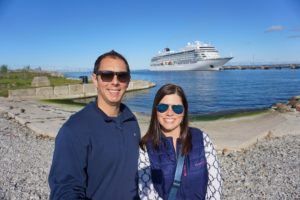
DB & The Princess
Welcome Aboard! We are Don and Heidi, the husband and wife travel team behind EatSleepCruise.com. We took our first cruise vacation together 13 years ago and have been hooked ever since. Follow along as we share our travel tips, cruise reviews, information on ports of call, and the latest cruise news to help you plan the ultimate cruise vacation. Are you ready to embark on your journey to “sea the world, one port at a time”?

What’s Trending
Contact Us: [email protected]

Carnival Cruise Line forced to make beverage package change
B oth Carnival Cruise Line and Royal Caribbean have been forced to make major operational changes after the tragic bridge collapse in Baltimore. After Key Bridge was hit by a freight ship that led to its destruction, the port that both cruise lines use has been closed for the foreseeable future.
It was a terrible tragedy, but neither cruise line could simply stop operating because they had ships at sea scheduled to return to that port. Both Carnival ( CCL ) and Royal Caribbean acted very quickly and shifted their Baltimore sailings to Norfolk, VA.
Related: Carnival follows Royal Caribbean in fixing worst part of cruising
That's a massive operational feat to pull off which both companies achieved in just a few days. Carnival shared how it was handling a sailing that left from Baltimore before the bridge collapse
"Carnival Legend is scheduled to return from its current voyage on Sunday, March 31. It will now return to Norfolk on Sunday, and guests will be provided complimentary bus service back to Baltimore. Carnival Legend’s next seven-day itinerary on March 31 will then operate from and return to Norfolk," the cruise line shared.
The port switch, however, will have a negative impact on future cruises that many passengers will be angry about.
Carnival may get boos for Cheers
Sailing from different ports means that the local laws and taxes may be different. When Royal Caribbean sails from Galveston, for example, people who buy its Unlimited Beverage Package can only order from a limited menu until the ship hits international waters.
Cheers offers unlimited water, soda, juice, and specialty coffee along with 15 alcoholic beverages for $59.95 per day on sailings of six days or more when purchased in advance. Shorter sailings cost $69.95 per day and all packages are charged an 18%b gratuity.
People buying onboard pay an extra $5 per day and you can only buy the package for the duration of the cruise. In addition, all adults sailing in the same room have to buy the drink package (although exceptions may be made if passengers call the cruise line).
Carnival, for its sailings from Norfolk has shared that it has to make a major change to its Cheers Beverage Package on those sailings. The cruise line has adopted the rules it uses on sailings from New York and Texas for its Norfolk cruise.
Carnival changes Cheers for Norfolk sailings
While Royal Caribbean offers a limited drink menu out of Galveston (the cruise line does not sail from New York), it does still offer unlimited drinks to people who buy its beverage package. Carnival takes a different tact and does not offer Cheers! on night one on sailings from New York and Texas.
That's the policy its taking in Norfolk and any passengers who paid for Cheers on upcoming sailings will get a refund for the first day of their cruise.
“Our temporary shift in operations from Baltimore to Norfolk for Carnival Legend necessitates a slight modification in how we implement the Cheers! program. We cannot offer Cheers! benefits while in waters under the Commonwealth of Virginia’s jurisdiction. Therefore, we will not offer Cheers! benefits on the first day of your cruise,” according to an email from Guest Services Vice President Colleen Oliverio.
Can't seems to be more of a question of choice as Royal Caribbean has not made the same change.
"For Royal, you can absolutely use your drink package immediately however TABC law limits cruise ships to only sell alcohol made in the great state of Texas while in port. once the ship has moved into international waters, full bars open up. Carnival on the other hand just chooses to hold off altogether with their drink package making their Cheers begin on day 2 (You don't pay for day 1). you can still purchase drink by drink, but they too have to follow the same TABC laws mentioned," Todd W. poste don the Royal Caribbean blog .
Royal Caribbean has not said it plans to have any drink package limitations on Norfolk sailings.

- CruiseMapper
- Cruise news
- Carnival Legend ship changes homeport to Norfolk VA amid...
Carnival Legend ship changes homeport to Norfolk VA amid Baltimore Bridge's collapse
CCL-Carnival Cruise Line has announced a temporary relocation of its operations for the Carnival Legend due to ongoing rescue and recovery operations in Baltimore Harbor following the Key Bridge collapse. Consequently, the Carnival Legend, currently en route, will conclude her journey on Sunday, March 31, with her return now rescheduled for Norfolk Virginia instead of Baltimore.
To facilitate guests affected by this change, CCL will provide complimentary bus transportation from Norfolk back to Baltimore. Additionally, the upcoming 7-day cruise, scheduled to commence on March 31, will embark from and return to Norfolk. Carnival is actively communicating these adjustments to guests booked on the current and subsequent voyages.
Christine Duffy (CCL's President) expressed the company's solidarity with those impacted in Baltimore and acknowledged President Biden's commitment to prompt the reopening of Baltimore Harbor to maritime traffic.
"While we await the finalization of these efforts, we're grateful for the swift assistance and hospitality offered by the city of Norfolk. We will keep our future cruise guests informed about when operations will resume in Baltimore," Duffy affirmed.

Current time by city
For example, New York
Current time by country
For example, Japan
Time difference
For example, London
For example, Dubai
Coordinates
For example, Hong Kong
For example, Delhi
For example, Sydney
Geographic coordinates of Elektrostal, Moscow Oblast, Russia
City coordinates
Coordinates of Elektrostal in decimal degrees
Coordinates of elektrostal in degrees and decimal minutes, utm coordinates of elektrostal, geographic coordinate systems.
WGS 84 coordinate reference system is the latest revision of the World Geodetic System, which is used in mapping and navigation, including GPS satellite navigation system (the Global Positioning System).
Geographic coordinates (latitude and longitude) define a position on the Earth’s surface. Coordinates are angular units. The canonical form of latitude and longitude representation uses degrees (°), minutes (′), and seconds (″). GPS systems widely use coordinates in degrees and decimal minutes, or in decimal degrees.
Latitude varies from −90° to 90°. The latitude of the Equator is 0°; the latitude of the South Pole is −90°; the latitude of the North Pole is 90°. Positive latitude values correspond to the geographic locations north of the Equator (abbrev. N). Negative latitude values correspond to the geographic locations south of the Equator (abbrev. S).
Longitude is counted from the prime meridian ( IERS Reference Meridian for WGS 84) and varies from −180° to 180°. Positive longitude values correspond to the geographic locations east of the prime meridian (abbrev. E). Negative longitude values correspond to the geographic locations west of the prime meridian (abbrev. W).
UTM or Universal Transverse Mercator coordinate system divides the Earth’s surface into 60 longitudinal zones. The coordinates of a location within each zone are defined as a planar coordinate pair related to the intersection of the equator and the zone’s central meridian, and measured in meters.
Elevation above sea level is a measure of a geographic location’s height. We are using the global digital elevation model GTOPO30 .
Elektrostal , Moscow Oblast, Russia
thesis implied or stated
Have a language expert improve your writing.
Run a free plagiarism check in 10 minutes, generate accurate citations for free.
- Knowledge Base
- How to Write a Thesis Statement | 4 Steps & Examples
How to Write a Thesis Statement | 4 Steps & Examples
Published on January 11, 2019 by Shona McCombes . Revised on August 15, 2023 by Eoghan Ryan.
A thesis statement is a sentence that sums up the central point of your paper or essay . It usually comes near the end of your introduction .
Your thesis will look a bit different depending on the type of essay you’re writing. But the thesis statement should always clearly state the main idea you want to get across. Everything else in your essay should relate back to this idea.
You can write your thesis statement by following four simple steps:
- Start with a question
- Write your initial answer
- Develop your answer
- Refine your thesis statement
Instantly correct all language mistakes in your text
Upload your document to correct all your mistakes in minutes

Table of contents
What is a thesis statement, placement of the thesis statement, step 1: start with a question, step 2: write your initial answer, step 3: develop your answer, step 4: refine your thesis statement, types of thesis statements, other interesting articles, frequently asked questions about thesis statements.
A thesis statement summarizes the central points of your essay. It is a signpost telling the reader what the essay will argue and why.
The best thesis statements are:
- Concise: A good thesis statement is short and sweet—don’t use more words than necessary. State your point clearly and directly in one or two sentences.
- Contentious: Your thesis shouldn’t be a simple statement of fact that everyone already knows. A good thesis statement is a claim that requires further evidence or analysis to back it up.
- Coherent: Everything mentioned in your thesis statement must be supported and explained in the rest of your paper.
Receive feedback on language, structure, and formatting
Professional editors proofread and edit your paper by focusing on:
- Academic style
- Vague sentences
- Style consistency
See an example

The thesis statement generally appears at the end of your essay introduction or research paper introduction .
The spread of the internet has had a world-changing effect, not least on the world of education. The use of the internet in academic contexts and among young people more generally is hotly debated. For many who did not grow up with this technology, its effects seem alarming and potentially harmful. This concern, while understandable, is misguided. The negatives of internet use are outweighed by its many benefits for education: the internet facilitates easier access to information, exposure to different perspectives, and a flexible learning environment for both students and teachers.
You should come up with an initial thesis, sometimes called a working thesis , early in the writing process . As soon as you’ve decided on your essay topic , you need to work out what you want to say about it—a clear thesis will give your essay direction and structure.
You might already have a question in your assignment, but if not, try to come up with your own. What would you like to find out or decide about your topic?
For example, you might ask:
After some initial research, you can formulate a tentative answer to this question. At this stage it can be simple, and it should guide the research process and writing process .
Here's why students love Scribbr's proofreading services
Discover proofreading & editing
Now you need to consider why this is your answer and how you will convince your reader to agree with you. As you read more about your topic and begin writing, your answer should get more detailed.
In your essay about the internet and education, the thesis states your position and sketches out the key arguments you’ll use to support it.
The negatives of internet use are outweighed by its many benefits for education because it facilitates easier access to information.
In your essay about braille, the thesis statement summarizes the key historical development that you’ll explain.
The invention of braille in the 19th century transformed the lives of blind people, allowing them to participate more actively in public life.
A strong thesis statement should tell the reader:
- Why you hold this position
- What they’ll learn from your essay
- The key points of your argument or narrative
The final thesis statement doesn’t just state your position, but summarizes your overall argument or the entire topic you’re going to explain. To strengthen a weak thesis statement, it can help to consider the broader context of your topic.
These examples are more specific and show that you’ll explore your topic in depth.
Your thesis statement should match the goals of your essay, which vary depending on the type of essay you’re writing:
- In an argumentative essay , your thesis statement should take a strong position. Your aim in the essay is to convince your reader of this thesis based on evidence and logical reasoning.
- In an expository essay , you’ll aim to explain the facts of a topic or process. Your thesis statement doesn’t have to include a strong opinion in this case, but it should clearly state the central point you want to make, and mention the key elements you’ll explain.
If you want to know more about AI tools , college essays , or fallacies make sure to check out some of our other articles with explanations and examples or go directly to our tools!
- Ad hominem fallacy
- Post hoc fallacy
- Appeal to authority fallacy
- False cause fallacy
- Sunk cost fallacy
College essays
- Choosing Essay Topic
- Write a College Essay
- Write a Diversity Essay
- College Essay Format & Structure
- Comparing and Contrasting in an Essay
(AI) Tools
- Grammar Checker
- Paraphrasing Tool
- Text Summarizer
- AI Detector
- Plagiarism Checker
- Citation Generator
A thesis statement is a sentence that sums up the central point of your paper or essay . Everything else you write should relate to this key idea.
The thesis statement is essential in any academic essay or research paper for two main reasons:
- It gives your writing direction and focus.
- It gives the reader a concise summary of your main point.
Without a clear thesis statement, an essay can end up rambling and unfocused, leaving your reader unsure of exactly what you want to say.
Follow these four steps to come up with a thesis statement :
- Ask a question about your topic .
- Write your initial answer.
- Develop your answer by including reasons.
- Refine your answer, adding more detail and nuance.
The thesis statement should be placed at the end of your essay introduction .
Cite this Scribbr article
If you want to cite this source, you can copy and paste the citation or click the “Cite this Scribbr article” button to automatically add the citation to our free Citation Generator.
McCombes, S. (2023, August 15). How to Write a Thesis Statement | 4 Steps & Examples. Scribbr. Retrieved March 26, 2024, from https://www.scribbr.com/academic-essay/thesis-statement/
Is this article helpful?
Shona McCombes
Other students also liked, how to write an essay introduction | 4 steps & examples, how to write topic sentences | 4 steps, examples & purpose, academic paragraph structure | step-by-step guide & examples, what is your plagiarism score.
Developing an Implied Thesis Statement and Topic Sentences
LESSON Different types of writing require different types of thesis statements A brief statement that identifies a writer's thoughts, opinions, or conclusions about a topic. Thesis statements bring unity to a piece of writing, giving it a focus and a purpose. You can use three questions to help form a thesis statement: What is my topic? What am I trying to say about that topic? Why is this important to me or my reader? . Most academic essays A formal writing that the author composes using research, a strong thesis, and supporting details in order to advance an idea or demonstrate understanding of a topic. require the writer to include a stated thesis statement A thesis statement that has been explicitly written in an article, essay, or other reading. while other pieces, such as personal narratives A story or account of events that is written or told. , allow the writer to use an implied thesis statement An indirect overall argument, idea, or belief that a writer uses as the basis of an essay or dissertation but is never stated directly in the writing. , one that is not directly stated but one that the reader can infer To reach a conclusion based on context and your own knowledge. from reading. Both types of thesis statements tell the reader the author A person who wrote a text. 's topic The subject of a reading. and purpose The reason the writer is writing about a topic. It is what the writer wants the reader to know, feel, or do after reading the work. for writing about it.
Both an implied and stated thesis in an academic essay may sound like this: Preparing a weekly schedule helps students to be successful because it allows them to structure their class and work schedules, plan ahead for busy periods, and build in some free time for themselves . Both types of thesis statements provide direction for the remainder of the essay. The difference is that as a stated thesis, the statement actually appears in the introduction The first paragraph of an essay. It must engage the reader, set the tone, provide background information, and present the thesis. of the essay. An implied thesis statement, on the other hand, does not appear in the essay at all.
The introductory paragraph The first paragraph of an essay. It must engage the reader, set the tone, provide background information, and present the thesis. written for a narrative using the above thesis as an implied thesis statement may sound like this:
My first week in college taught me many things about my new, busy schedule. I got caught up in socializing and missed a few important assignments. I also thought I could work more at my part-time job like I had during high school. I soon learned, however, that I needed to schedule my activities better in order to be successful.
An opening paragraph A selection of a writing that is made up of sentences formed around one main point. Paragraphs are set apart by a new line and sometimes indentation. like this one in a narrative does not come out and state the author's exact thesis. It does, however, provide similar direction for the reader, resulting in an implied thesis.
A narrative is a story that has a purpose for being told. In other words, when a writer chooses a topic for a narrative, he or she must have a reason for writing about it. For example, if you wanted to write about a significant event in your life by telling a story about how you got your first job, you would need to think about your audience reading the narrative and ask yourself, "What do I want my readers to take away from this story?"
Using a variety of starting strategies such as brainstorming A prewriting technique where the author lists multiple ideas as he or she thinks of them, not considering one more than another until all ideas are captured. The objective is to create one great idea, or many ideas, on which to base a writing. , listing ideas, freewriting A prewriting technique where the author begins writing without regard to spelling or grammar about ideas, topics, or even characters, descriptions of events, and settings. Often the writer will freewrite for a set period of time. The objective is to develop a storyline through the writing process itself. , clustering A prewriting technique where the author creates an informal visual layout of possible ideas, grouping them together. The objective is to create visual clusters of information on which to base a writing. , or webbing A prewriting technique where the author creates an informal visual layout of possible ideas and then draws lines to connect them into a type of "web." The objective is to see connections between events and characters. can help you to begin thinking about a topic. Then, you can ask yourself questions about your topic using the five "Ws and the H – who, what, where, when, why, and how" to gather more ideas to write about. From there, you can begin the writing process by writing one paragraph about your topic, including a clear topic sentence A group of words, phrases, or clauses that expresses a complete thought. A complete sentence has these characteristics: a capitalized first word, a subject and a predicate, and end punctuation, such as a period (.), question mark (?), or exclamation mark (!). . That paragraph should reveal the main points The most important idea in a paragraph. Main points support the main idea of a reading. you would like to expand on in multiple paragraphs. The topic sentence in the paragraph can be used as your implied thesis statement for a narrative essay.
To write an implied thesis statement in response to a narrative prompt Instructions for a writing assignment given by an instructor. , follow these steps:
Step 1: Brainstorm.
Brainstorm possible ideas from your life experience that could potentially answer or respond to the prompt.
Step 2: Choose a topic and write a paragraph.
Choose one of the topics and write a brief paragraph explaining how that particular topic applies to the prompt.
Step 3: Write an implied thesis statement.
Using the topic sentence of the paragraph as a guide, write an implied thesis statement that explains why the details of the paragraph are important.
Step 4: Develop the topic sentences.
Begin outlining A preliminary plan for a piece of a writing, often in the form of a list. It should include a topic, audience, purpose, thesis statement, and main and supporting points. the essay by developing topic sentences A sentence that contains the controlling idea for an entire paragraph and is typically the first sentence of the paragraph. from the supporting details in the paragraph. This ensures that the implied thesis works as the guiding idea for the narrative.
There are many approaches to writing a narrative essay, but using the steps above can help you respond effectively to a typical narrative prompt in a college class.
Sometimes it works better for writers to write an implied thesis statement instead of a stated one because of the nature of the content The text in a writing that includes facts, thoughts, and ideas. The information that forms the body of the work. . For example, a report including large amounts of data that seeks to persuade the reader to draw a certain conclusion would be more likely to include a stated thesis. However, a narrative essay that explains certain events in a person's life is more likely to include an implied thesis statement because the writer wants to engage the reader in a different way. College students are often asked to write narrative essays to make connections between their personal experiences and the content they are studying, and an implied thesis statement helps to organize narratives in the same way a stated thesis statement organizes other essays.
Let's examine the process of developing a narrative essay that includes an implied thesis statement.
Prompt from instructor: Write about an important life lesson you have learned.
First, create a list of possible narrative essay topics from the prompt given by the instructor.
- A little kindness goes a long way.
- Being patient can bring rewards.
- I am a role model in everything I do.
Next, choose one of the ideas related to a life lesson to be your topic.
Topic: How I learned to be a role model in everything I do.
Now, begin to create the implied thesis using this topic. To do this, write a short paragraph describing how you will tell this narrative and what you learned or are trying to explain to the reader.
Narrative: I will tell the story of when I worked at the daycare center last summer. When I worked as a childcare assistant, I learned the children were watching me and would mimic my actions. This taught me to be careful of what I said and did because I learned that children act like those around them.
Now, write the implied thesis statement: "My experience at the daycare center taught me to always be a good role model because children are always watching."
From here, develop topic sentences that support the implied thesis statement for the paragraphs of the essay.
- Paragraph 1, Introduction, Topic Sentence:
"I learned many lessons when I worked at the community daycare center."
- Paragraph 2, Topic Sentence:
"My first day on the job was the most important of them all."
- Paragraph 3, Topic Sentence:
"Little Johnny taught me what it meant to be a bad role model for children."
- Paragraph 4, Topic Sentence:
"I changed my actions and saw immediate results with the children."
- Paragraph 5, Conclusion, Topic Sentence:
"I’ve worked at the daycare center for three summers now and continue to learn lessons from the children each year."
From here, a draft of the narrative essay can be created using the topic sentences.
Now, follow the process to choose a topic, write an implied thesis statement, and develop topic sentences that support the implied thesis statement for a potential narrative essay.
List three potential narrative topics from the following prompt:
Write about an important life lesson that you have learned.
Potential narrative topics
- Learning how to benefit from your failures creates success.
Patience leads to perfection.
- Real happiness comes not from things, but from giving and receiving love.
Step 2: Choose a topic and write a paragraph .
From the list created in Step 1, choose one as your topic.
Write a three- to four-sentence paragraph about the topic.
I learned how to play the piano, but it took many years to develop this skill. I had to be patient to sit down and practice daily. I also had to be patient with myself to realize I would learn how to play the piano in time. Only through repeated practice can a person really perfect a talent. Therefore, patience is essential to perfection.
From the short paragraph above, write an implied thesis statement.
Implied Thesis Statement
I have learned that when developing a skill, patience leads to practice, and practice leads to perfection.
Develop topic sentences that would be used in a narrative essay to support the implied thesis statement.
Paragraph 1, Introduction, Topic Sentence
It took many years for me to learn how to play the piano when I was young.
Paragraph 2, Topic Sentence
I had to be patient and practice every day, even when there seemed to be better things to do.
Paragraph 3, Topic Sentence
I also had to be patient with myself because I wanted to learn faster and become a modern-day Beethoven.
Paragraph 4, Conclusion, Topic Sentence
Repeated practice is how all perfection is achieved, even the perfection of genius.
How can an implied thesis statement be just as effective as a stated thesis?
Sample Answer
Like a stated thesis, an implied thesis will include the topic and purpose of the piece of writing and will help the writer structure his or her supporting details.
Why do implied thesis statements work well in a narrative essay?
Narratives are about something personal that is happening to the writer. Sometimes it is more effective for a writer to draw the reader into the narrative. Doing so can create a stronger connection between the writer and the passage and can help the reader find the meaning by becoming personally connected with the piece.
Copyright ©2022 The NROC Project
Identifying the Thesis Statement
Learning objectives.
- identify explicit thesis statements in texts
- identify implicit thesis statements in texts
You’ll remember that the first step of the reading process, previewing , allows you to get a big-picture view of the document you’re reading. This way, you can begin to understand the structure of the overall text. The most important step in getting a good understanding of an essay or book is to find the thesis statement.
A thesis consists of a specific topic and a position statement on the topic. All of the other ideas in the text support and develop the thesis. The thesis statement is often found in the introduction, sometimes after an initial “hook” or interesting story; sometimes, however, the thesis is not explicitly stated until the end of an essay, and sometimes it is not stated at all. In those instances, there is an implied thesis statement, in which you can generally extract the thesis statement by looking for a few key sentences and ideas.
According to author Pavel Zemliansky,
Arguments then, can be explicit and implicit, or implied. Explicit arguments contain noticeable and definable thesis statements and lots of specific proofs. Implicit arguments, on the other hand, work by weaving together facts and narratives, logic and emotion, personal experiences and statistics. Unlike explicit arguments, implicit ones do not have a one-sentence thesis statement. Instead, authors of implicit arguments use evidence of many different kinds in effective and creative ways to build and convey their point of view to their audience. Research is essential for creative effective arguments of both kinds.
Even if what you’re reading is an informative text, rather than an argumentative one, it might still rely on an implicit thesis statement. It might ask you to piece together the overall purpose of the text based on a series of content along the way.
Most readers expect to see the point of your argument (the thesis statement) within the first few paragraphs. This does not mean that you have to place it there every time. Some writers place it at the very end, slowly building up to it throughout their work, to explain a point after the fact. Others don’t bother with one at all, but feel that their thesis is “implied” anyway. Beginning writers, however, should avoid the implied thesis unless certain of the audience. Almost every professor will expect to see a clearly discernible thesis sentence in the introduction.
Thesis statements vary based on the rhetorical strategy of the essay, but thesis statements typically share the following characteristics:
- Presents the main idea
- Most often is one sentence
- Tells the reader what to expect
- Is a summary of the essay topic
- Usually worded to have an argumentative edge
- Written in the third person
In academic writing, the thesis is often explicit : it is included as a sentence as part of the text. It might be near the beginning of the work, but not always–some types of academic writing leave the thesis until the conclusion.
Journalism and reporting also rely on explicit thesis statements that appear very early in the piece–the first paragraph or even the first sentence.
Works of literature, on the other hand, usually do not contain a specific sentence that sums up the core concept of the writing. However, readers should finish the piece with a good understanding of what the work was trying to convey. This is what’s called an implicit thesis statement: the primary point of the reading is conveyed indirectly, in multiple locations throughout the work. (In literature, this is also referred to as the theme of the work.)
Academic writing sometimes relies on implicit thesis statements, as well.
This video offers excellent guidance in identifying the thesis statement of a work, no matter if it’s explicit or implicit. As the video below argues, every piece of writing has a thesis statement.
Click here to download a transcript for this video
- Identify the Thesis Statement. Provided by : Lumen Learning. License : CC BY: Attribution
- Checklist for a Thesis Statement. Provided by : Excelsior OWL. Located at : https://owl.excelsior.edu/esl-wow/getting-ready-to-write/developing-a-thesis/esl-checklist-for-a-thesis-statement/ . License : CC BY: Attribution
- Research Writing and Argument. Authored by : Pavel Zemliansky. Located at : https://learn.saylor.org/mod/page/view.php?id=7163 . Project : Methods of Discovery: A Guide to Research Writing. License : CC BY: Attribution
- How to Identify the Thesis Statement. Authored by : Martha Ann Kennedy. Located at : https://youtu.be/di1cQgc1akg . License : All Rights Reserved . License Terms : Standard YouTube License

OASIS: Writing Center
Writing a paper: thesis statements, basics of thesis statements.
The thesis statement is the brief articulation of your paper's central argument and purpose. You might hear it referred to as simply a "thesis." Every scholarly paper should have a thesis statement, and strong thesis statements are concise, specific, and arguable. Concise means the thesis is short: perhaps one or two sentences for a shorter paper. Specific means the thesis deals with a narrow and focused topic, appropriate to the paper's length. Arguable means that a scholar in your field could disagree (or perhaps already has!).
Strong thesis statements address specific intellectual questions, have clear positions, and use a structure that reflects the overall structure of the paper. Read on to learn more about constructing a strong thesis statement.
Being Specific
This thesis statement has no specific argument:
Needs Improvement: In this essay, I will examine two scholarly articles to find similarities and differences.
This statement is concise, but it is neither specific nor arguable—a reader might wonder, "Which scholarly articles? What is the topic of this paper? What field is the author writing in?" Additionally, the purpose of the paper—to "examine…to find similarities and differences" is not of a scholarly level. Identifying similarities and differences is a good first step, but strong academic argument goes further, analyzing what those similarities and differences might mean or imply.
Better: In this essay, I will argue that Bowler's (2003) autocratic management style, when coupled with Smith's (2007) theory of social cognition, can reduce the expenses associated with employee turnover.
The new revision here is still concise, as well as specific and arguable. We can see that it is specific because the writer is mentioning (a) concrete ideas and (b) exact authors. We can also gather the field (business) and the topic (management and employee turnover). The statement is arguable because the student goes beyond merely comparing; he or she draws conclusions from that comparison ("can reduce the expenses associated with employee turnover").
Making a Unique Argument
This thesis draft repeats the language of the writing prompt without making a unique argument:
Needs Improvement: The purpose of this essay is to monitor, assess, and evaluate an educational program for its strengths and weaknesses. Then, I will provide suggestions for improvement.
You can see here that the student has simply stated the paper's assignment, without articulating specifically how he or she will address it. The student can correct this error simply by phrasing the thesis statement as a specific answer to the assignment prompt.
Better: Through a series of student interviews, I found that Kennedy High School's antibullying program was ineffective. In order to address issues of conflict between students, I argue that Kennedy High School should embrace policies outlined by the California Department of Education (2010).
Words like "ineffective" and "argue" show here that the student has clearly thought through the assignment and analyzed the material; he or she is putting forth a specific and debatable position. The concrete information ("student interviews," "antibullying") further prepares the reader for the body of the paper and demonstrates how the student has addressed the assignment prompt without just restating that language.
Creating a Debate
This thesis statement includes only obvious fact or plot summary instead of argument:
Needs Improvement: Leadership is an important quality in nurse educators.
A good strategy to determine if your thesis statement is too broad (and therefore, not arguable) is to ask yourself, "Would a scholar in my field disagree with this point?" Here, we can see easily that no scholar is likely to argue that leadership is an unimportant quality in nurse educators. The student needs to come up with a more arguable claim, and probably a narrower one; remember that a short paper needs a more focused topic than a dissertation.
Better: Roderick's (2009) theory of participatory leadership is particularly appropriate to nurse educators working within the emergency medicine field, where students benefit most from collegial and kinesthetic learning.
Here, the student has identified a particular type of leadership ("participatory leadership"), narrowing the topic, and has made an arguable claim (this type of leadership is "appropriate" to a specific type of nurse educator). Conceivably, a scholar in the nursing field might disagree with this approach. The student's paper can now proceed, providing specific pieces of evidence to support the arguable central claim.
Choosing the Right Words
This thesis statement uses large or scholarly-sounding words that have no real substance:
Needs Improvement: Scholars should work to seize metacognitive outcomes by harnessing discipline-based networks to empower collaborative infrastructures.
There are many words in this sentence that may be buzzwords in the student's field or key terms taken from other texts, but together they do not communicate a clear, specific meaning. Sometimes students think scholarly writing means constructing complex sentences using special language, but actually it's usually a stronger choice to write clear, simple sentences. When in doubt, remember that your ideas should be complex, not your sentence structure.
Better: Ecologists should work to educate the U.S. public on conservation methods by making use of local and national green organizations to create a widespread communication plan.
Notice in the revision that the field is now clear (ecology), and the language has been made much more field-specific ("conservation methods," "green organizations"), so the reader is able to see concretely the ideas the student is communicating.
Leaving Room for Discussion
This thesis statement is not capable of development or advancement in the paper:
Needs Improvement: There are always alternatives to illegal drug use.
This sample thesis statement makes a claim, but it is not a claim that will sustain extended discussion. This claim is the type of claim that might be appropriate for the conclusion of a paper, but in the beginning of the paper, the student is left with nowhere to go. What further points can be made? If there are "always alternatives" to the problem the student is identifying, then why bother developing a paper around that claim? Ideally, a thesis statement should be complex enough to explore over the length of the entire paper.
Better: The most effective treatment plan for methamphetamine addiction may be a combination of pharmacological and cognitive therapy, as argued by Baker (2008), Smith (2009), and Xavier (2011).
In the revised thesis, you can see the student make a specific, debatable claim that has the potential to generate several pages' worth of discussion. When drafting a thesis statement, think about the questions your thesis statement will generate: What follow-up inquiries might a reader have? In the first example, there are almost no additional questions implied, but the revised example allows for a good deal more exploration.
Thesis Mad Libs
If you are having trouble getting started, try using the models below to generate a rough model of a thesis statement! These models are intended for drafting purposes only and should not appear in your final work.
- In this essay, I argue ____, using ______ to assert _____.
- While scholars have often argued ______, I argue______, because_______.
- Through an analysis of ______, I argue ______, which is important because_______.
Words to Avoid and to Embrace
When drafting your thesis statement, avoid words like explore, investigate, learn, compile, summarize , and explain to describe the main purpose of your paper. These words imply a paper that summarizes or "reports," rather than synthesizing and analyzing.
Instead of the terms above, try words like argue, critique, question , and interrogate . These more analytical words may help you begin strongly, by articulating a specific, critical, scholarly position.
Read Kayla's blog post for tips on taking a stand in a well-crafted thesis statement.
Related Resources
Didn't find what you need? Search our website or email us .
Read our website accessibility and accommodation statement .
- Previous Page: Introductions
- Next Page: Conclusions
- Office of Student Disability Services
Walden Resources
Departments.
- Academic Residencies
- Academic Skills
- Career Planning and Development
- Customer Care Team
- Field Experience
- Military Services
- Student Success Advising
- Writing Skills
Centers and Offices
- Center for Social Change
- Office of Academic Support and Instructional Services
- Office of Degree Acceleration
- Office of Research and Doctoral Services
- Office of Student Affairs
Student Resources
- Doctoral Writing Assessment
- Form & Style Review
- Quick Answers
- ScholarWorks
- SKIL Courses and Workshops
- Walden Bookstore
- Walden Catalog & Student Handbook
- Student Safety/Title IX
- Legal & Consumer Information
- Website Terms and Conditions
- Cookie Policy
- Accessibility
- Accreditation
- State Authorization
- Net Price Calculator
- Contact Walden
Walden University is a member of Adtalem Global Education, Inc. www.adtalem.com Walden University is certified to operate by SCHEV © 2024 Walden University LLC. All rights reserved.
Purdue Online Writing Lab Purdue OWL® College of Liberal Arts
Tips and Examples for Writing Thesis Statements

Welcome to the Purdue OWL
This page is brought to you by the OWL at Purdue University. When printing this page, you must include the entire legal notice.
Copyright ©1995-2018 by The Writing Lab & The OWL at Purdue and Purdue University. All rights reserved. This material may not be published, reproduced, broadcast, rewritten, or redistributed without permission. Use of this site constitutes acceptance of our terms and conditions of fair use.
This resource provides tips for creating a thesis statement and examples of different types of thesis statements.
Tips for Writing Your Thesis Statement
1. Determine what kind of paper you are writing:
- An analytical paper breaks down an issue or an idea into its component parts, evaluates the issue or idea, and presents this breakdown and evaluation to the audience.
- An expository (explanatory) paper explains something to the audience.
- An argumentative paper makes a claim about a topic and justifies this claim with specific evidence. The claim could be an opinion, a policy proposal, an evaluation, a cause-and-effect statement, or an interpretation. The goal of the argumentative paper is to convince the audience that the claim is true based on the evidence provided.
If you are writing a text that does not fall under these three categories (e.g., a narrative), a thesis statement somewhere in the first paragraph could still be helpful to your reader.
2. Your thesis statement should be specific—it should cover only what you will discuss in your paper and should be supported with specific evidence.
3. The thesis statement usually appears at the end of the first paragraph of a paper.
4. Your topic may change as you write, so you may need to revise your thesis statement to reflect exactly what you have discussed in the paper.
Thesis Statement Examples
Example of an analytical thesis statement:
The paper that follows should:
- Explain the analysis of the college admission process
- Explain the challenge facing admissions counselors
Example of an expository (explanatory) thesis statement:
- Explain how students spend their time studying, attending class, and socializing with peers
Example of an argumentative thesis statement:
- Present an argument and give evidence to support the claim that students should pursue community projects before entering college
- Locating and Evaluating Thesis Statements
The following video offers a definition of thesis statements, and guidance for finding thesis statements as you read.
Pay attention to the difference between explicit thesis statements and implicit (or implied ) thesis statements .
(This video was made for a specific class, so it will make references to assignments that won’t apply to you. You can also stop watching at 6:00, since the video then proceeds to writing thesis statements, which is not our focus at the moment.)
- Video: Locating and Evaluating Thesis Statements. Provided by : Lumen Learning. License : CC BY: Attribution
- Locating, Evaluating, & Writing Thesis Statements. Authored by : H Ortiz. Located at : https://youtu.be/8a0T_ySxda8 . License : All Rights Reserved . License Terms : Standard YouTube License
- Table of Contents
Instructor Resources (available upon sign-in)
- Overview of Instructor Resources
- Quiz Survey
Reading: Types of Reading Material
- Introduction to Reading
- Outcome: Types of Reading Material
- Characteristics of Texts, Part 1
- Characteristics of Texts, Part 2
- Characteristics of Texts, Part 3
- Characteristics of Texts, Conclusion
- Self Check: Types of Writing
Reading: Reading Strategies
- Outcome: Reading Strategies
- The Rhetorical Situation
- Academic Reading Strategies
- Self Check: Reading Strategies
Reading: Specialized Reading Strategies
- Outcome: Specialized Reading Strategies
- Online Reading Comprehension
- How to Read Effectively in Math
- How to Read Effectively in the Social Sciences
- How to Read Effectively in the Sciences
- 5 Step Approach for Reading Charts and Graphs
- Self Check: Specialized Reading Strategies

Reading: Vocabulary
- Outcome: Vocabulary
- Strategies to Improve Your Vocabulary
- Using Context Clues
- The Relationship Between Reading and Vocabulary
- Self Check: Vocabulary
Reading: Thesis
- Outcome: Thesis
- The Organizational Statement
- Self Check: Thesis
Reading: Supporting Claims
- Outcome: Supporting Claims
- Types of Support
- Supporting Claims
- Self Check: Supporting Claims
Reading: Logic and Structure
- Outcome: Logic and Structure
- Rhetorical Modes
- Inductive and Deductive Reasoning
- Diagramming and Evaluating Arguments
- Logical Fallacies
- Evaluating Appeals to Ethos, Logos, and Pathos
- Self Check: Logic and Structure
Reading: Summary Skills
- Outcome: Summary Skills
- How to Annotate
- Paraphrasing
- Quote Bombs
- Summary Writing
- Self Check: Summary Skills
- Conclusion to Reading
Writing Process: Topic Selection
- Introduction to Writing Process
- Outcome: Topic Selection
- Starting a Paper
- Choosing and Developing Topics
- Back to the Future of Topics
- Developing Your Topic
- Self Check: Topic Selection
Writing Process: Prewriting
- Outcome: Prewriting
- Prewriting Strategies for Diverse Learners
- Rhetorical Context
- Working Thesis Statements
- Self Check: Prewriting
Writing Process: Finding Evidence
- Outcome: Finding Evidence
- Using Personal Examples
- Performing Background Research
- Listening to Sources, Talking to Sources
- Self Check: Finding Evidence
Writing Process: Organizing
- Outcome: Organizing
- Moving Beyond the Five-Paragraph Theme
- Introduction to Argument
- The Three-Story Thesis
- Organically Structured Arguments
- Logic and Structure
- The Perfect Paragraph
- Introductions and Conclusions
- Self Check: Organizing
Writing Process: Drafting
- Outcome: Drafting
- From Outlining to Drafting
- Flash Drafts
- Self Check: Drafting
Writing Process: Revising
- Outcome: Revising
- Seeking Input from Others
- Responding to Input from Others
- The Art of Re-Seeing
- Higher Order Concerns
- Self Check: Revising
Writing Process: Proofreading
- Outcome: Proofreading
- Lower Order Concerns
- Proofreading Advice
- "Correctness" in Writing
- The Importance of Spelling
- Punctuation Concerns
- Self Check: Proofreading
- Conclusion to Writing Process
Research Process: Finding Sources
- Introduction to Research Process
- Outcome: Finding Sources
- The Research Process
- Finding Sources
- What are Scholarly Articles?
- Finding Scholarly Articles and Using Databases
- Database Searching
- Advanced Search Strategies
- Preliminary Research Strategies
- Reading and Using Scholarly Sources
- Self Check: Finding Sources
Research Process: Source Analysis
- Outcome: Source Analysis
- Evaluating Sources
- CRAAP Analysis
- Evaluating Websites
- Synthesizing Sources
- Self Check: Source Analysis
Research Process: Writing Ethically
- Outcome: Writing Ethically
- Academic Integrity
- Defining Plagiarism
- Avoiding Plagiarism
- Using Sources in Your Writing
- Self Check: Writing Ethically
Research Process: MLA Documentation
- Introduction to MLA Documentation
- Outcome: MLA Documentation
- MLA Document Formatting
- MLA Works Cited
- Creating MLA Citations
- MLA In-Text Citations
- Self Check: MLA Documentation
- Conclusion to Research Process
Grammar: Nouns and Pronouns
- Introduction to Grammar
- Outcome: Nouns and Pronouns
- Pronoun Cases and Types
- Pronoun Antecedents
- Try It: Nouns and Pronouns
- Self Check: Nouns and Pronouns
Grammar: Verbs
- Outcome: Verbs
- Verb Tenses and Agreement
- Non-Finite Verbs
- Complex Verb Tenses
- Try It: Verbs
- Self Check: Verbs
Grammar: Other Parts of Speech
- Outcome: Other Parts of Speech
- Comparing Adjectives and Adverbs
- Adjectives and Adverbs
- Conjunctions
- Prepositions
- Try It: Other Parts of Speech
- Self Check: Other Parts of Speech
Grammar: Punctuation
- Outcome: Punctuation
- End Punctuation
- Hyphens and Dashes
- Apostrophes and Quotation Marks
- Brackets, Parentheses, and Ellipses
- Semicolons and Colons
- Try It: Punctuation
- Self Check: Punctuation
Grammar: Sentence Structure
- Outcome: Sentence Structure
- Parts of a Sentence
- Common Sentence Structures
- Run-on Sentences
- Sentence Fragments
- Parallel Structure
- Try It: Sentence Structure
- Self Check: Sentence Structure
Grammar: Voice
- Outcome: Voice
- Active and Passive Voice
- Using the Passive Voice
- Conclusion to Grammar
- Try It: Voice
- Self Check: Voice
Success Skills
- Introduction to Success Skills
- Habits for Success
- Critical Thinking
- Time Management
- Writing in College
- Computer-Based Writing
- Conclusion to Success Skills
Please log in to save materials. Log in
- Thesis Statement
Thesis Statements: How to Identify and Write Them

Students read about and watch videos about how to identify and write thesis statements.
Then, students complete two exercises where they identify and write thesis statements.
*Conditions of Use: While the content on each page is licensed under an Attribution Non-Commercial Share Alike license, some pages contain content and/or references with other types of licenses or copyrights. Please look at the bottom of each page to view this information.
Learning Objectives
By the end of these readings and exercises, students will be able to:
- define the term thesis statement
- read about two recommended thesis statement models
- practice identifying thesis statements in other texts
- write your own effective thesis statements

Attributions:
- The banner image is licensed under Adobe Stock .
- The untitled image of a detective by Peggy_Marco is licensed under Pixabay .
What is a thesis statement?
The thesis statement is the key to most academic writing. The purpose of academic writing is to offer your own insights, analyses, and ideas—to show not only that you understand the concepts you’re studying, but also that you have thought about those concepts in your own way and agreed or disagreed, or developed your own unique ideas as a result of your analysis. The thesis statement is the one sentence that encapsulates the result of your thinking, as it offers your main insight or argument in condensed form.
We often use the word “argument” in English courses, but we do not mean it in the traditional sense of a verbal fight with someone else. Instead, you “argue” by taking a position on an issue and supporting it with evidence. Because you’ve taken a position about your topic, someone else may be in a position to disagree (or argue) with the stance you have taken. Think about how a lawyer presents an argument or states their case in a courtroom—similarly, you want to build a case around the main idea of your essay. For example, in 1848, when Elizabeth Cady Stanton drafted “The Declaration of Sentiments,” she was thinking about how to convince New York State policymakers to change the laws to allow women to vote. Stanton was making an argument.
Some consider all writing a form of argument—or at least of persuasion. After all, even if you’re writing a letter or an informative essay, you’re implicitly trying to persuade your audience to care about what you’re saying. Your thesis statement represents the main idea—or point—about a topic or issue that you make in an argument. For example, let’s say that your topic is social media. A thesis statement about social media could look like one of the following sentences:
- Social media harms the self-esteem of American pre-teen girls.
- Social media can help connect researchers when they use hashtags to curate their work.
- Social media tools are not tools for social movements, they are marketing tools.
Please take a look at this video which explains the basic definition of a thesis statement further (we will be building upon these ideas through the rest of the readings and exercises):
Attributions:
- The content about thesis statements has been modified from English Composition 1 by Lumen Learning and Audrey Fisch et al. and appears under an Attribution 4.0 International (CC BY 4.0) license.
- The video "Purdue OWL: Thesis Statements" by the Purdue University Online Writing Lab appears under a YouTube license .
The Two-Story Model (basic)
First, we will cover the two-story thesis statement model. This is the most basic model, but that doesn't mean it's bad or that you shouldn't use it. If you have a hard time with thesis statements or if you just want to keep things simple, this model is perfect for you. Think of it like a two-story building with two layers.
A basic thesis sentence has two main parts:
- Topic: What you’re writing about
- Angle: What your main idea is about that topic, or your claim
Examples:
When you read all of the thesis statement examples, can you see areas where the writer could be more specific with their angle? The more specific you are with your topic and your claims, the more focused your essay will be for your reader.
Thesis: A regular exercise regime leads to multiple benefits, both physical and emotional.
- Topic: Regular exercise regime
- Angle: Leads to multiple benefits
Thesis: Adult college students have different experiences than typical, younger college students.
- Topic: Adult college students
- Angle: Have different experiences
Thesis: The economics of television have made the viewing experience challenging for many viewers because shows are not offered regularly, similar programming occurs at the same time, and commercials are rampant.
- Topic: Television viewing
- Angle: Challenging because shows shifted, similar programming, and commercials
Please watch how Dr. Cielle Amundson demonstrates the two-story thesis statement model in this video:
- The video "Thesis Statement Definition" by Dr. Cielle Amundson appears under a YouTube license .
The Three-Story Model (advanced)
Now, it's time to challenge yourself. The three-story model is like a building with three stories. Adding multiple levels to your thesis statement makes it more specific and sophisticated. Though you'll be trying your hand with this model in the activity later on, throughout our course, you are free to choose either the two-story or three-story thesis statement model. Still, it's good to know what the three-story model entails.
A thesis statement can have three parts:
- Relevance : Why your argument is meaningful
Conceptualizing the Three-Story Model:
A helpful metaphor based on this passage by Oliver Wendell Holmes Sr.:
There are one-story intellects, two-story intellects, and three-story intellects with skylights. All fact collectors who have no aim beyond their facts are one-story men. Two-story men compare, reason, generalize using the labor of fact collectors as their own. Three-story men idealize, imagine, predict—their best illumination comes from above the skylight.
One-story theses state inarguable facts. Two-story theses bring in an arguable (interpretive or analytical) point. Three-story theses nest that point within its larger, compelling implications.
The biggest benefit of the three-story metaphor is that it describes a process for building a thesis. To build the first story, you first have to get familiar with the complex, relevant facts surrounding the problem or question. You have to be able to describe the situation thoroughly and accurately. Then, with that first story built, you can layer on the second story by formulating the insightful, arguable point that animates the analysis. That’s often the most effortful part: brainstorming, elaborating and comparing alternative ideas, finalizing your point. With that specified, you can frame up the third story by articulating why the point you make matters beyond its particular topic or case.
Though the three-story thesis statement model appears a little bit differently in this video, you can still see how it follows the patterns mentioned within this section:
- The content about thesis statements has been modified from Writing in College by Amy Guptill from Milne Publishing and appears under an Attribution-NonCommercial-ShareAlike 4.0 International (CC BY-NC-SA 4.0) license.
- The video "How to Write a STRONG Thesis Statement" by Scribbr appears under a YouTube license .
Identifying Thesis Statements
You’ll remember that the first step of the reading process, previewing , allows you to get a big-picture view of the document you’re reading. This way, you can begin to understand the structure of the overall text. The most important step of understanding an essay or a book is to find the thesis statement.
Pinpointing a Thesis Statement
A thesis consists of a specific topic and an angle on the topic. All of the other ideas in the text support and develop the thesis. The thesis statement is often found in the introduction, sometimes after an initial “hook” or interesting story; sometimes, however, the thesis is not explicitly stated until the end of an essay. Sometimes it is not stated at all. In those instances, there is an implied thesis statement. You can generally extract the thesis statement by looking for a few key sentences and ideas.
Most readers expect to see the point of your argument (the thesis statement) within the first few paragraphs. This does not mean that it has to be placed there every time. Some writers place it at the very end, slowly building up to it throughout their work, to explain a point after the fact. Others don’t bother with one at all but feel that their thesis is “implied” anyway. Beginning writers, however, should avoid the implied thesis unless certain of the audience. Almost every professor will expect to see a clearly discernible thesis sentence in the introduction.
Shared Characteristics of Thesis Statements:
- present the main idea
- are one sentence
- tell the reader what to expect
- summarize the essay topic
- present an argument
- are written in the third person (does not include the “I” pronoun)
The following “How to Identify a Thesis Statement” video offers advice for locating a text’s thesis statement. It asks you to write one or two sentences that summarize the text. When you write that summary, without looking at the text itself, you’ve most likely paraphrased the thesis statement.
You can view the transcript for “How to Identify the Thesis Statement” here (download).
Try it!
Try to check your thesis statement identification skills with this interactive exercise from the Excelsior University Online Writing Lab.
- The video "How to Identidy the Thesis Statement" by Martha Ann Kennedy appears under a YouTube license .
- The "Judging Thesis Statements" exercise from the Purdue University Online Writing Lab appears under an Attribution 4.0 International (CC BY 4.0) license.
Writing Your Own Thesis Statements
A thesis statement is a single sentence (or sometimes two) that provides the answers to these questions clearly and concisely. Ask yourself, “What is my paper about, exactly?” Answering this question will help you develop a precise and directed thesis, not only for your reader, but for you as well.
Key Elements of an Effective Thesis Statement:
- A good thesis is non-obvious. High school teachers needed to make sure that you and all your classmates mastered the basic form of the academic essay. Thus, they were mostly concerned that you had a clear and consistent thesis, even if it was something obvious like “sustainability is important.” A thesis statement like that has a wide-enough scope to incorporate several supporting points and concurring evidence, enabling the writer to demonstrate his or her mastery of the five-paragraph form. Good enough! When they can, high school teachers nudge students to develop arguments that are less obvious and more engaging. College instructors, though, fully expect you to produce something more developed.
- A good thesis is arguable . In everyday life, “arguable” is often used as a synonym for “doubtful.” For a thesis, though, “arguable” means that it’s worth arguing: it’s something with which a reasonable person might disagree. This arguability criterion dovetails with the non-obvious one: it shows that the author has deeply explored a problem and arrived at an argument that legitimately needs 3, 5, 10, or 20 pages to explain and justify. In that way, a good thesis sets an ambitious agenda for a paper. A thesis like “sustainability is important” isn’t at all difficult to argue for, and the reader would have little intrinsic motivation to read the rest of the paper. However, an arguable thesis like “sustainability policies will inevitably fail if they do not incorporate social justice,” brings up some healthy skepticism. Thus, the arguable thesis makes the reader want to keep reading.
- A good thesis is well specified. Some student writers fear that they’re giving away the game if they specify their thesis up front; they think that a purposefully vague thesis might be more intriguing to the reader. However, consider movie trailers: they always include the most exciting and poignant moments from the film to attract an audience. In academic papers, too, a well specified thesis indicates that the author has thought rigorously about an issue and done thorough research, which makes the reader want to keep reading. Don’t just say that a particular policy is effective or fair; say what makes it is so. If you want to argue that a particular claim is dubious or incomplete, say why in your thesis.
- A good thesis includes implications. Suppose your assignment is to write a paper about some aspect of the history of linen production and trade, a topic that may seem exceedingly arcane. And suppose you have constructed a well supported and creative argument that linen was so widely traded in the ancient Mediterranean that it actually served as a kind of currency. 2 That’s a strong, insightful, arguable, well specified thesis. But which of these thesis statements do you find more engaging?
How Can You Write Your Thesis Statements?
A good basic structure for a thesis statement is “they say, I say.” What is the prevailing view, and how does your position differ from it? However, avoid limiting the scope of your writing with an either/or thesis under the assumption that your view must be strictly contrary to their view.
- focus on one, interesting idea
- choose the two-story or three-story model
- be as specific as possible
- write clearly
- have evidence to support it (for later on)
Thesis Statement Examples:
- Although many readers believe Romeo and Juliet to be a tale about the ill fate of two star-crossed lovers, it can also be read as an allegory concerning a playwright and his audience.
- The “War on Drugs” has not only failed to reduce the frequency of drug-related crimes in America but actually enhanced the popular image of dope peddlers by romanticizing them as desperate rebels fighting for a cause.
- The bulk of modern copyright law was conceived in the age of commercial printing, long before the Internet made it so easy for the public to compose and distribute its own texts. Therefore, these laws should be reviewed and revised to better accommodate modern readers and writers.
- The usual moral justification for capital punishment is that it deters crime by frightening would-be criminals. However, the statistics tell a different story.
- If students really want to improve their writing, they must read often, practice writing, and receive quality feedback from their peers.
- Plato’s dialectical method has much to offer those engaged in online writing, which is far more conversational in nature than print.
You can gather more thesis statement tips and tricks from this video titled "How to Create a Thesis Statement" from the Florida SouthWestern State College Academic Support Centers:
- The video "How to Create a Thesis Statement" by the Florida SouthWestern State College Academic Support Centers appears under a YouTube license .
Additional, Optional Resources

If you feel like you might need more support with thesis statements, please check out these helpful resources for some extra, optional instruction:
- "Checklist for a Thesis Statement" from the Excelsior University Online Writing Lab which appears under an Attribution 4.0 International (CC BY 4.0) license.
- "Developing Your Thesis" from Hamiliton College which appears under a copyright.
- "Parts of a Thesis Sentence and Common Problems" from the Excelsior University Online Writing Lab which appears under an Attribution 4.0 International (CC BY 4.0) license.
- "Tips and Examples for Writing Thesis Statements" from the Purdue University Writing Lab which appears under a copyright.
- "Writing Thesis Statements & Hypotheses" by Hope Matis from Clarkson University which appears under a copyright.
- The content about these resources has been modified from English Composition 1 by Lumen Learning and Audrey Fisch et al. and appears under an Attribution 4.0 International (CC BY 4.0) license.
- The content about these resources has been modified from Writing in College by Amy Guptill from Milne Publishing and appears under an Attribution-NonCommercial-ShareAlike 4.0 International (CC BY-NC-SA 4.0) license.
- The untitled image of the books by OpenClipart-Vectors is licensed under Pixabay .
Exercise #1: Identify Thesis Statements
Throughout the readings, we have been learning what an effective thesis statement is and what it is not. Before we even get to writing our own thesis statements, let's look for real-world examples. It's your turn to locate and identify thesis statements!

Objectives/Goals
By completeting this exercise students will be able to:
- identify the main ideas within a text
- summarize the main ideas within a text
- choose one sentence from the text which you believe is the thesis statement
- argue why you believe that's the true thesis statement of the text
Instructions
- Any print or online text (probably something around a page in length) will be fine for this exercise.
- If you have trouble finding a text, I recommend looking at this collection from 88 Open Essays – A Reader for Students of Composition & Rhetoric by Sarah Wangler and Tina Ulrich.
- Write the title of the text that you selected and the full name(s) of the author (this is called the full citation).
- Provide a hyperlink for that text.
- Write one paragraph (5+ sentences) summarizing the main points of the text.
- Write one more argumentative paragraph (5+ sentences) where you discuss which sentence (make sure it appears within quotation marks, but don't worry about in-text citations for now) you think is the author's thesis statement and why.
Submitting the Assignment
You will be submitting Exercise #1: Identify Thesis Statements within Canvas in our weekly module.
Please check the assignment page for deadlines and Canvas Guides to help you in case you have trouble submitting your document.
- "88 Open Essays - A Reader for Students of Composition & Rhetoric" by Sarah Wangler and Tina Ulrich from LibreTexts appears under an Attribution-ShareAlike 4.0 International (CC BY-SA 4.0) license.
Exercise #2: Write Your Own Thesis Statements
Now that you've had some practice with locating and identifying thesis statements, you are ready to write some practice thesis statements yourself.

- write a two-story thesis statement
- write a three-story thesis statement
- reflect on your thesis statement skills
- Using the same text from Exercise #1, write a two-story thesis statement in response to that text.
- Using the same text from Exercise #1, write a three-story thesis statement in response to that text.
- Is it easy for you to identify thesis statements in other texts? Why or why not?
- What methods do you use to identify/locate thesis statements?
- In the past, how have you felt when you needed to write a thesis statement?
- How did you feel about writing your own thesis statements in Exercise #2?
- Which thesis statement writing strategies were the most beneficial to you? Why?
- What challenges did you face when you were writing you thesis statement for Exercise #2?
You will be submitting Exercise #2: Write Your Own Thesis Statements within Canvas in our weekly module.
- The untitled image of the writing supplies by ptra is licensed under Pixabay .
Version History
Thesis: definition and examples in composition.
Glossary of Grammatical and Rhetorical Terms
- An Introduction to Punctuation
- Ph.D., Rhetoric and English, University of Georgia
- M.A., Modern English and American Literature, University of Leicester
- B.A., English, State University of New York
A thesis ( THEE-ses ) is the main (or controlling) idea of an essay , report , speech , or research paper , sometimes written as a single declarative sentence known as a thesis statement . A thesis may be implied rather than stated directly. Plural: theses . It's also known as a thesis statement, thesis sentence, controlling idea.
In the classical rhetorical exercises known as the progymnasmata , the thesis is an exercise that requires a student to argue a case for one side or the other.
Etymology From the Greek, "to put"
Examples and Observations (Definition #1)
- "My thesis is simple: in the next century mankind must harness the nuclear genie if our energy needs are to be met and our security preserved." (John B. Ritch, "Nuclear Green," Prospect Magazine , March 1999)
- "We watch baseball: it's what we have always imagined life should be like. We play softball. It's sloppy--the way life really is." (from the introduction to Watching Baseball, Playing Softball)
- "Through Mansfield's skillful handling of point of view, characterization, and plot development, Miss Brill comes across as a convincing character who evokes our sympathy." (thesis statement in Miss Brill's Fragile Fantasy )
- "Suppose there were no critics to tell us how to react to a picture, a play, or a new composition of music. Suppose we wandered innocent as the dawn into an art exhibition of unsigned paintings. By what standards, by what values would we decide whether they were good or bad, talented or untalented, success or failures? How can we ever know that what we think is right?" (Marya Mannes, "How Do You Know It's Good?")
- "I think people are disturbed by the discovery that no longer is a small town autonomous--it is a creature of the state and of the Federal Government. We have accepted money for our schools, our libraries, our hospitals, our winter roads. Now we face the inevitable consequence: the benefactor wants to call the turns." (E.B. White, "Letter from the East")
- "It is possible to stop most drug addiction in the United States within a very short time. Simply make all drugs available and sell them at cost." (Gore Vidal, "Drugs")
- The Two Parts of an Effective Thesis "An effective thesis is generally composed of two parts: a topic and the writer's attitude or opinion about or reaction to that topic." (William J. Kelly, Strategy and Structure . Allyn and Bacon, 1996)
- Drafting and Revising a Thesis "It's a good idea to formulate a thesis early in the writing process , perhaps by jotting it on scratch paper, by putting it at the head of a rough outline , or by attempting to write an introductory paragraph that includes the thesis. Your tentative thesis will probably be less graceful than the thesis you include in the final version of your essay. Here, for example, is one student's early effort: Although they both play percussion instruments, drummers and percussionists are very different. The thesis that appeared in the final draft of the student's paper was more polished: Two types of musicians play percussion instruments--drummers and percussionists--and they are as different as Quiet Riot and the New York Philharmonic. Don't worry too soon about the exact wording of your thesis, however, because your main point may change as you refine your ideas." (Diana Hacker, The Bedford Handbook , 6th ed. Bedford/St. Martin's, 2002)
- A Good Thesis - "A good thesis tells the audience exactly what you want them to know, understand, and remember when your speech is done. Write it as a simple, declarative sentence (or two) that restates the speech purpose and states the main points that support the purpose. Although you may formulate a thesis statement early in the speech development process, you may revise and reword it as you research your topic.' (Sherwyn P. Morreale, Brian H. Spitzberg, and J. Kevin Barge, Human Communication: Motivation, Knowledge, and Skills , 2nd ed. Thomson Higher Education, 2007) - "An effective thesis statement singles out some aspect of a subject for attention and clearly defines your approach to it." (David Blakesley and Jeffrey L. Hoogeveen, Writing: A Manual for the Digital Age . Wadsworth, 2011)
Examples and Observations (Definition #2)
" Thesis . This advanced exercise [one of the progymnasmata] asks the student to write an answer to a 'general question' ( quaestio infina )--that is, a question not involving individuals. . . . Quintilian . . . notes that a general question can be made into a persuasive subject if names are added (II.4.25). That is, a Thesis would pose a general question such as 'Should a man marry?' or 'Should one fortify a city?' (A Special Question on the other hand would be 'Should Marcus marry Livia?' or 'Should Athens spend money to build a defensive wall?')" (James J. Murphy, A Short History of Writing Instruction: From Ancient Greece to Modern America , 2nd ed. Lawrence Erlbaum, 2001)
- How to Write a Good Thesis Statement
- Definition and Examples of Analysis in Composition
- What an Essay Is and How to Write One
- Definition and Examples of Body Paragraphs in Composition
- An Introduction to Academic Writing
- How to Write a Solid Thesis Statement
- The Ultimate Guide to the 5-Paragraph Essay
- Revising a Paper
- The Introductory Paragraph: Start Your Paper Off Right
- Understanding Organization in Composition and Speech
- What Is a Written Summary?
- An Essay Revision Checklist
- Focusing in Composition
- Topic In Composition and Speech
- What Is a Compelling Introduction?
- How To Write an Essay

- school Campus Bookshelves
- menu_book Bookshelves
- perm_media Learning Objects
- login Login
- how_to_reg Request Instructor Account
- hub Instructor Commons
- Download Page (PDF)
- Download Full Book (PDF)
- Periodic Table
- Physics Constants
- Scientific Calculator
- Reference & Cite
- Tools expand_more
- Readability
selected template will load here
This action is not available.

6.5: Writing a Working Thesis
- Last updated
- Save as PDF
- Page ID 6500

- Steven D. Krause
- Eastern Michigan University
The next step, developing a “working thesis,” can be a difficult and time-consuming process. However, as was the case when considering different ideas for research in the first place, spending the time now on devising a good working thesis will pay off later.
For our purposes here (and for most college classes), a thesis advocates a specific and debatable issue. In academic writing (including the writing done by your professors), the thesis is often stated fairly directly in the first third or so of the writing, though not usually at the end of the first paragraph where students are often told to place it. The sentence or two that seems to encapsulate the issue of the essay is called a “thesis statement.”
Frequently, theses are implied—that is, while the piece of writing clearly has a point that the reader understands, there may not be a specific sentence or two that can easily be identified as the “thesis statement.” For example, theses are often implied in newspapers and magazines, along with a lot of the writing that appears on Web pages.
The point is a thesis is a point.
Theses are not statements of facts, simple questions, or summaries of events. They are positions that you as the writer take on and “defend” with evidence, logic, observations, and the other tools of discourse. Most kinds of writing—and particularly academic writing—have a thesis, directly stated or implied. Even most of the writing we largely think of as “informational” has a directly stated or implied thesis.
Theses also tend to lend a certain organization to written arguments since what you include (or exclude) in a written text is largely controlled by the thesis. The main goal of the thesis (either as a specific statement or as an implied statement) is to answer two key questions that are concerns of all readers: “what’s your point?” and “why should I care?”
Now, a working thesis is more or less a temporary thesis you devise in the beginning of the research process in order to set some direction in your research. However, as I wrote in the beginning of this chapter, you should remember:
Your working thesis is temporary and should change as you research, write, and learn more about your topic.
Think of the working thesis as the scaffolding and bracing put up around buildings when they are under construction: these structures are not designed to forever be a part of the building. Just the opposite. But you couldn’t build the building in the first place if you didn’t have the scaffolding and bracing that you inevitably have to tear away from the finished building.
Here’s another way of thinking of it: while the journey of 1000 miles begins with just one step (so the saying goes), you still have to pick some kind of direction in the beginning. That’s the purpose of a working thesis. You might change your mind about the direction of your research as you progress through the process, but you’ve got to start somewhere.
What does a working thesis look like? Before considering some potentially “good” examples of working theses, read through these BAD examples of statements, ones that ARE NOT theses, at least for the purposes of academic writing:
- Computer crime is bad.
- Fisheries around the world are important.
- The Great Gatsby is an American novel.
None of these sentences would make effective theses because each of these is more or less a statement of fact. Of course, we could debate some of the details here. But practically speaking, most people would assume and believe these statements to be true. Because of that, these statements don’t have much potential as working theses.
These statements ARE NOT really theses either:
- There are many controversial ways of dealing with computer crime.
- There are many things that could be done to preserve fisheries around the world.
- The Great Gatsby is a wonderful novel for several different reasons.
These revised working thesis statements are better than the previous examples, but they are not quite working theses yet. The problem with these possible working theses is that they are hopelessly vague and give no idea to the reader where the essay is going. Also, while these statements are a bit more debatable than the previous group of examples, they are still statements that most people would more or less accept as facts.
While this next group of statements is yet another step closer, these statements ARE NOT really good working theses either:
- This essay will be about the role computer hackers play in computer crime committed on the Internet.
- This essay will discuss some of the measures the international community should take in order to preserve fisheries around the world.
- My essay is about the relevance today of The Great Gatsby’s depiction of the connection between material goods and the American dream.
Each of these statements is close to being a working thesis because each is about an idea that has been focused into a specific topic. However, these statements are not quite working thesis statements because they don’t offer a position or opinion that will be defended in some way. To turn these topics into working theses, the writer needs to take a side on the issues suggested in the statements.
Now, these revised statements ARE examples of possible working theses:
- While some computer hackers are harmless, most of them commit serious computer crimes and represent a serious Internet security problem.
- The international community should enact strict conservation measures to preserve fisheries and save endangered fish species around the world.
- The Great Gatsby’s depiction of the connection between material goods and the American dream is still relevant today.
If you compare these possible working theses with the statements at the beginning of this section, you will hopefully see the differences between the “bad” and “good” working theses, and hopefully you can see the characteristics of a viable working thesis.
Each of the “good” working thesis statements:
- takes a stand that is generally not considered a “fact;”
- is specific enough to give the writer and potential reader some idea as to the direction the writing will take; and
- offers an initial position on the topic that takes a stand.
Another useful characteristic of a good working thesis is that it can help you as writer to determine what your essay will NOT be about. For example, the phrasing of the working thesis on computer hackers suggests to both the reader and the researcher that the essay will NOT be about the failure of “dot com” business, computer literacy, or computer software. Certainly these issues are related to the issue of computer hackers and computer crime, but these other issues will not become the focus of the essay.
Exercise 5.4
- Working with the topic you’ve chosen, create a working thesis similar to the above examples. Try to ensure that your working thesis is focused and to the point by keeping it to only one sentence. Creating a working thesis can be tricky, so be sure to devote some time to try out different possible working thesis statements. And don’t forget: a working thesis is the temporary scaffolding that will help you build your essay. It will and should change in the process of writing, so it doesn’t need to be “perfect” at this stage.
- After you have individually formed working theses, get together with a small group of classmates to share and revise them.
Thesis and Purpose Statements
Use the guidelines below to learn the differences between thesis and purpose statements.
In the first stages of writing, thesis or purpose statements are usually rough or ill-formed and are useful primarily as planning tools.
A thesis statement or purpose statement will emerge as you think and write about a topic. The statement can be restricted or clarified and eventually worked into an introduction.
As you revise your paper, try to phrase your thesis or purpose statement in a precise way so that it matches the content and organization of your paper.
Thesis statements
A thesis statement is a sentence that makes an assertion about a topic and predicts how the topic will be developed. It does not simply announce a topic: it says something about the topic.
Good: X has made a significant impact on the teenage population due to its . . . Bad: In this paper, I will discuss X.
A thesis statement makes a promise to the reader about the scope, purpose, and direction of the paper. It summarizes the conclusions that the writer has reached about the topic.
A thesis statement is generally located near the end of the introduction. Sometimes in a long paper, the thesis will be expressed in several sentences or an entire paragraph.
A thesis statement is focused and specific enough to be proven within the boundaries of the paper. Key words (nouns and verbs) should be specific, accurate, and indicative of the range of research, thrust of the argument or analysis, and the organization of supporting information.
Purpose statements
A purpose statement announces the purpose, scope, and direction of the paper. It tells the reader what to expect in a paper and what the specific focus will be.
Common beginnings include:
“This paper examines . . .,” “The aim of this paper is to . . .,” and “The purpose of this essay is to . . .”
A purpose statement makes a promise to the reader about the development of the argument but does not preview the particular conclusions that the writer has drawn.
A purpose statement usually appears toward the end of the introduction. The purpose statement may be expressed in several sentences or even an entire paragraph.
A purpose statement is specific enough to satisfy the requirements of the assignment. Purpose statements are common in research papers in some academic disciplines, while in other disciplines they are considered too blunt or direct. If you are unsure about using a purpose statement, ask your instructor.
This paper will examine the ecological destruction of the Sahel preceding the drought and the causes of this disintegration of the land. The focus will be on the economic, political, and social relationships which brought about the environmental problems in the Sahel.
Sample purpose and thesis statements
The following example combines a purpose statement and a thesis statement (bold).
The goal of this paper is to examine the effects of Chile’s agrarian reform on the lives of rural peasants. The nature of the topic dictates the use of both a chronological and a comparative analysis of peasant lives at various points during the reform period. . . The Chilean reform example provides evidence that land distribution is an essential component of both the improvement of peasant conditions and the development of a democratic society. More extensive and enduring reforms would likely have allowed Chile the opportunity to further expand these horizons.
For more tips about writing thesis statements, take a look at our new handout on Developing a Thesis Statement.

Writing Process and Structure
This is an accordion element with a series of buttons that open and close related content panels.
Getting Started with Your Paper
Interpreting Writing Assignments from Your Courses
Generating Ideas for Your Paper
Creating an Argument
Thesis vs. Purpose Statements
Developing a Thesis Statement
Architecture of Arguments
Working with Sources
Quoting and Paraphrasing Sources
Using Literary Quotations
Citing Sources in Your Paper
Drafting Your Paper
Introductions
Paragraphing
Developing Strategic Transitions
Conclusions
Revising your paper.
Peer Reviews
Reverse Outlines
Revising an Argumentative Paper
Revision Strategies for Longer Projects
Finishing Your Paper
Twelve Common Errors: An Editing Checklist
How to Proofread your Paper
Writing Collaboratively
Collaborative and Group Writing

12 Essay Features: Read Me!
Things you should already know.
Here are a few key highlights that you have already read about, or should have. To make sure you have a solid foundation, you should review this chapter before every essay. You do not need to complete the activities in this chapter, they are meant as a refresher.
It’s important to remember that there are certain features that all of these styles or methods have in common:
- A clear thesis statement usually provided at the beginning of the essay
- Clear and logical transitions
- Focused body paragraphs with evidence and support
- Appropriate format and style if you use source material
- A conclusion that expands upon your thesis and summarizes evidence
- Clear writing that follows standard conventions for things like grammar , punctuation , and spelling.
Stating Your Thesis
Most traditional research essays will require some kind of explicitly stated thesis. This means you should state your thesis clearly and directly for your readers. A thesis is a statement of purpose, one to two sentences long, about your research, that is often presented at the beginning of your essay to prepare your audience for the content of your whole research paper. Your thesis is often presented at the end of your introductory paragraph or paragraphs.
Your thesis statement should state your topic and, in a persuasive research essay, state your assertion about that topic. You should avoid simply “announcing” your thesis and should work to make it engaging. A good thesis will answer the “so what?” question your audience might have about your research paper. A good thesis statement will tell your readers what your research paper will be about and, specifically, why it is important.
You should avoid thesis statements that simply announce your purpose. For example, in a research paper on health care reform, you should avoid a thesis statement like this:
Instead, a good thesis statement on health care reform in the United States would be more specific and make a point that will help establish a clear purpose and focus for your essay. It might look something like this:
Implying Your Thesis

If you’re unsure about whether you should use an explicit thesis or simply maintain a clear focus without an explicit thesis, be sure to ask your instructor. In English 101, you should use an explicit thesis statement to make it clear you know how to use one.
Placement of Thesis Statements
A thesis statement is usually the last sentence of the first paragraph of a paper. It is also customary to restate the main idea of your paper in the conclusion so that the paper leaves a clear impression on the reader.
Topic Sentences
So, thesis statements tell us the goals of the entire writing assignment and topic sentences tell us the goal of a particular paragraph. Essentially, the CEO is the thesis statement and the topic sentences are the managers. Let’s use a quick cheeseburger method to see how topic sentences work:

Linking Paragraphs: Transitions
Transitions are words or phrases that indicate linkages in ideas. When writing, you need to lead your readers from one idea to the next, showing how those ideas are logically linked. Transition words and phrases help you keep your paragraphs and groups of paragraphs logically connected for a reader. Writers often check their transitions during the revising stage of the writing process.
Here are some example transition words to help as you transition both within paragraphs and from one paragraph to the next.
Paragraphing: MEAL Plan
When it’s time to draft your essay and bring your content together for your audience, you will be working to build strong paragraphs. Your paragraphs in a research paper will focus on presenting the information you found in your source material and commenting on or analyzing that information. It’s not enough to simply present the information in your body paragraphs and move on. You want to give that information a purpose and connect it to your main idea or thesis statement.
Duke University coined a term called the “MEAL Plan” that provides an effective structure for paragraphs in an academic research paper. Select the pluses to learn what each letter stands for.
Here are the same terms with examples:
MLA Formatting: The Basics
Papers constructed according to MLA guidelines should adhere to the following elements:
- Double-space all of the text of your paper, and use a clear font, such as Times New Roman or Courier 12-point font.
- Use one-inch margins on all sides, and indent the first line of a paragraph one half-inch from the left margin.
- List your name, your instructor’s name, the course, and the date in the upper left-hand corner of the first page. This is your heading . There is no cover page.
- Type a header in the upper right-hand corner with your last name, a space, and then a page number. Pages should be numbered consecutively with Arabic numerals (1, 2, 3, 4, etc.), one-half inch from the top and flush with the right margin.
- Provide in-text citations for all quoted, paraphrased, and summarized information in your paper.
- Include a Works Cited page at the end of your paper that gives full bibliographic information for each item cited in your paper.
- If you use endnotes, include them on a separate page before your Works Cited page
- Your Works Cited page at the end of your project should line up with the in-text citations in the body of your essay.
If you need more information, check the chapter on MLA Style.
A satisfying conclusion allows your reader to finish your paper with a clear understanding of the points you made and possibly even a new perspective on the topic.
Any single paper might have a number of conclusions, but as the writer, you must consider who the reader is and the conclusion you want them to reach. For example, is your reader relatively new to your topic? If so, you may want to restate your main points for emphasis as a way of starting the conclusion. (Don’t literally use the same sentence(s) as in your introduction but come up with a comparable way of restating your thesis.) You’ll want to smoothly conclude by showing the judgment you have reached is, in fact, reasonable.
Just restating your thesis isn’t enough. Ideally, you have just taken your reader through a strong, clear argument in which you have provided evidence for your perspective. You want to conclude by pointing out the importance or worthiness of your topic and argument. You could describe how the world would be different, or people’s lives changed if they ascribed to your perspective, plan, or idea.
You might also point out the limitations of the present understanding of your topic, suggest or recommend future action , study, or research that needs to be done.
If you have written a persuasive paper, hopefully, your readers will be convinced by what you have had to say!
20 Most Common Grammar Errors
The link below will take you outside of our book.

Thanks to some excellent research from Andrea Lunsford and her colleagues, every few years, we get a list of the “ 20 Most Common Errors ” beginning writers in the United States make. Every few years, Lunsford and her team of researchers examine thousands of student essays and survey hundreds of writing teachers in order to give us this list.
The good news is that most of the errors on this list are mistakes that we make when we are tired, in a hurry, and just not being good editors. So, they are easy fixes.
Once you finish reading through the 20 most common errors, you can come back here to complete the activity.
After completing this activity, you may download or print a completion report that summarizes your results.
Punctuation

Maybe you have heard the story about how punctuation saves lives. Clearly, there is a difference between
In addition to saving lives, using punctuation properly will help your writing be clean and clear and help you build your credibility as a writer.
The following link will provide you with an overview of the basic rules regarding punctuation and will give you a chance to practice using the information you have learned.
Putting It All Together
It is time to write your essay Keep this list of things to remember handy and put that paper together. You got this!

ATTRIBUTIONS
- Content Adapted from Excelsior Online Writing Lab (OWL). (2020). Excelsior College. Retrieved from https://owl.excelsior.edu/ licensed under a Creative Commons Attribution-4.0 International License .
- Original Content by Christine Jones. (2021). Licensed under a Creative Commons Attribution-4.0 International License .
English 101: Journey Into Open Copyright © 2021 by Christine Jones is licensed under a Creative Commons Attribution-NonCommercial-ShareAlike 4.0 International License , except where otherwise noted.
Share This Book
Arguments then, can be explicit and implicit, or implied. Explicit arguments contain noticeable and definable thesis statements and lots of specific proofs. Implicit arguments, on the other hand, work by weaving together facts and narratives, logic and emotion, personal experiences and statistics.
Implying Your Thesis. Not all research papers will require an explicitly stated thesis. Some research papers in some fields will simply require a strong focus. You can maintain a strong focus in your essay without an explicitly stated thesis by thinking about an implied thesis for your research paper. With an implied thesis, your point is never ...
• The thesis may be implied or explicitly stated, but it should always be evident to the reader. • The thesis may differ in form depending on the type of writing (argumentative, persuasive, informative, narrative, etc.). • The thesis should be restated in a new and interesting way in the conclusion. Explicit vs. Implied • An explicit thesis
Explicit vs. Implied Explicit: An explicit thesis directly states the writer's main idea/position and provides a clear direction for the essay. For example, The problems facing Africa are poverty, political corruption, and poor healthcare. Implied: An implied thesis is not directly stated, but rather suggested through the
Placement of the thesis statement. Step 1: Start with a question. Step 2: Write your initial answer. Step 3: Develop your answer. Step 4: Refine your thesis statement. Types of thesis statements. Other interesting articles. Frequently asked questions about thesis statements.
In those instances, there is an implied thesis statement, in which you can generally extract the thesis statement by looking for a few key sentences and ideas. Most readers expect to see the point of your argument (the thesis statement) within the first few paragraphs. This does not mean that it has to be placed there every time.
In a research study using psychology texts, the main idea was clearly stated in only 58 percent of the sampled paragraphs. Thus, you should be skilled in identifying stated and implied thesis statements. An introductory statement of the thesis is given at the beginning of the paragraph: A concluding statement of the thesis appears at the end of ...
Choose one of the topics and write a brief paragraph explaining how that particular topic applies to the prompt. Step 3: Write an implied thesis statement. Using the topic sentence of the paragraph as a guide, write an implied thesis statement that explains why the details of the paragraph are important. Step 4: Develop the topic sentences.
A thesis statement is a one or two sentence statement that states the main idea of an essay. It is a complete sentence, and it usually falls at the end of the introduction paragraph in an essay. Thesis statements can be direct or implied. Direct thesis statements are the most commonly used in essay writing.
In those instances, there is an implied thesis statement, in which you can generally extract the thesis statement by looking for a few key sentences and ideas. According to author Pavel Zemliansky, Arguments then, can be explicit and implicit, or implied. Explicit arguments contain noticeable and definable thesis statements and lots of specific ...
The thesis statement is the brief articulation of your paper's central argument and purpose. You might hear it referred to as simply a "thesis." Every scholarly paper should have a thesis statement, and strong thesis statements are concise, specific, and arguable. Concise means the thesis is short: perhaps one or two sentences for a shorter paper.
tutorial discussion about thesis statements: implied versus explicitly stated by kate guthrie caruso, instructor of writing, literature and creative writing
Tips for Writing Your Thesis Statement. 1. Determine what kind of paper you are writing: An analytical paper breaks down an issue or an idea into its component parts, evaluates the issue or idea, and presents this breakdown and evaluation to the audience.; An expository (explanatory) paper explains something to the audience.; An argumentative paper makes a claim about a topic and justifies ...
Locating and Evaluating Thesis Statements. The following video offers a definition of thesis statements, and guidance for finding thesis statements as you read. Pay attention to the difference between explicit thesis statements and implicit (or implied) thesis statements. (This video was made for a specific class, so it will make references to ...
In those instances, there is an implied thesis statement. You can generally extract the thesis statement by looking for a few key sentences and ideas. Most readers expect to see the point of your argument (the thesis statement) within the first few paragraphs. This does not mean that it has to be placed there every time.
A thesis ( THEE-ses ) is the main (or controlling) idea of an essay, report, speech, or research paper, sometimes written as a single declarative sentence known as a thesis statement. A thesis may be implied rather than stated directly. Plural: theses. It's also known as a thesis statement, thesis sentence, controlling idea.
Most kinds of writing—and particularly academic writing—have a thesis, directly stated or implied. Even most of the writing we largely think of as "informational" has a directly stated or implied thesis. Theses also tend to lend a certain organization to written arguments since what you include (or exclude) in a written text is largely ...
A thesis statement makes a promise to the reader about the scope, purpose, and direction of the paper. It summarizes the conclusions that the writer has reached about the topic. A thesis statement is generally located near the end of the introduction. Sometimes in a long paper, the thesis will be expressed in several sentences or an entire ...
With an implied thesis, your point is never stated directly, but your paper does have a clear focus or point. Even if you're not stating your thesis directly, you should keep your implied thesis in mind as you write. All papers require a specific focus, and a good research paper will maintain that focus throughout. ...
Arguments then, can be explicit and implicit, or implied. Explicit arguments contain noticeable and definable thesis statements and lots of specific proofs. ... it might still rely on an implicit thesis statement. It might ask you to piece together the overall purpose of the text based on a series of content along the way. Licenses and ...
If the main idea is stated, it will be clearly stated in the passage as a thesis statement. If it is implied, the reader must use the clues within the text to determine the main idea.
Thesis Capital Inc. Investment Relation - Canada ... Cautionary Statement Regarding Forward-Looking Statements ... performance or achievements to differ materially from those expressed or implied ...
The Graduate School at Penn State will host the 39th annual Graduate Exhibition from March 18-22 on the University Park campus and online, followed by the final round of the inaugural Three Minute Thesis competition at 10 a.m. March 23 at the Penn Stater Hotel and Conference Center and online. Both events are free and open to Penn State students, staff, faculty and community members.
- Vacation Rentals
- Restaurants
- Things to do
- Elektrostal Tourism
- Elektrostal Hotels
- Elektrostal Bed and Breakfast
- Flights to Elektrostal
- Elektrostal Restaurants
- Things to Do in Elektrostal
- Elektrostal Travel Forum
- Elektrostal Photos
- Elektrostal Map
- All Elektrostal Hotels
- Elektrostal Hotel Deals
- Elektrostal Hostels
- Elektrostal Business Hotels
- Elektrostal Family Hotels
- Elektrostal Spa Resorts
- 3-stars Hotels in Elektrostal
- Elektrostal Hotels with Game room
- Elektrostal Hotels with Banquet hall
- Hotels near Electrostal History and Art Museum
- Hotels near Park of Culture and Leisure
- Hotels near Statue of Lenin
- Hotels near Museum and Exhibition Center
- Hotels near Museum of Labor Glory
- Hotels near (ZIA) Zhukovsky International Airport
- Hotels near (VKO) Vnukovo Airport
- Hotels near (DME) Domodedovo Airport
- Dreams Jade Resort & Spa
- Xafira Deluxe Resort & Spa
- Mandalay Bay Resort & Casino
- The LINQ Hotel + Experience
- Bellagio Las Vegas
- Hyatt Ziva Cap Cana
- Isla Bella Beach Resort
- Secrets Akumal Riviera Maya
- Hotel Xcaret Mexico
- Hotel Tapasoli
- Excellence Punta Cana
- Hilton Hawaiian Village Waikiki Beach Resort
- Hotel Chester
- Barcelo Bavaro Palace All Inclusive Resort
- Aruba Ocean Villas
- Popular All-Inclusive Resorts
- Popular Beach Resorts
- Popular Family Resorts
- Popular All-Inclusive Hotels
- Popular Hotels With Waterparks
- Popular Honeymoon Resorts
- Popular Luxury Resorts
- Popular All-Inclusive Family Resorts
- Popular Golf Resorts
- Popular Spa Resorts
- Popular Cheap Resorts
- All Elektrostal Restaurants
- Cafés in Elektrostal
- Chinese Restaurants in Elektrostal
- European Restaurants for Families in Elektrostal
- European Restaurants for Large Groups in Elektrostal
- European Restaurants for Lunch in Elektrostal
- Fast Food Restaurants in Elektrostal
- French Restaurants in Elektrostal
- Italian Restaurants in Elektrostal
- Japanese Restaurants in Elektrostal
- Pizza in Elektrostal
- Russian Restaurants in Elektrostal
- Seafood Restaurants in Elektrostal
- Vegetarian Restaurants in Elektrostal
- GreenLeaders
- Elektrostal
- Things to Do
- Travel Stories
- Rental Cars
- Add a Place
- Travel Forum
- Travelers' Choice
- Help Center
- Europe
- Russia
- Central Russia
- Moscow Oblast
- Elektrostal
- Elektrostal Restaurants
Ratings and reviews
Location and contact.

PEKIN, Elektrostal - Lenina Ave. 40/8 - Restaurant Reviews, Photos & Phone Number - Tripadvisor
- Photography
- Film + Video
- Culture + Lifestyle
- Exhibits + Events
- Prescriptions
- Photographers
- Designers/Architects
- Organizations/Mags
- Museums/Galleries
- ANNOUNCEMENTS
- COLLECTIONS
- EXHIBITIONS
- 30/30 WOMEN
- CONTRIBUTORS
- SUBMISSIONS
- 30/30 WOMEN PHOTOGRAPHERS

I was born and raised in a working-class city, Elektrostal, Moscow region. I received a higher education in television in Moscow. I studied to be a documentary photographer. My vision of the aesthetics of the frame was significantly influenced by the aesthetics of my city – the endless forests and swamps of the Moscow region with endless factories, typical architecture and a meagre color palette. In this harsh world, people live and work, raise children, grow geranium, throw parties and live trouble, run a ski cross. They are the main characters of my photo projects.
I study a person in a variety of circumstances. We blog with friends with stories of such people. We are citizen journalists. In my works, I touch upon the topics of homelessness, people’s attitude to their bodies, sexual objectification, women’s work, alienation and living conditions of different people. The opportunity to communicate with my characters gives me a sense of belonging and modernity of life.
My photos create the effect of presence, invisible observation of people. I don’t interfere with what’s going on, I’m taking the place of an outside observer. I’m a participant in exhibitions in Rome (Loosenart Gallery), Collaborated with the Russian Geographical Community.
30 Under 30 Women Photographers 2021

- --> --> Thailand Biennale 2023 / The Open World Dec 9, 2023 – Apr 30, 2024 Thailand Biennale Mueang Chiang Rai, Thailand The first edition of Thailand Biennale was initiated by the Office of Contemporary Art and Culture, Thailand’s Ministry of Culture in Krabi in 2018, followed by Korat in 2021. By alternating the locations from various provinces throughout the country, the spirit of the Thailand Biennale decentralizes artistic activities (more…) Show Post >
- --> --> Tarek Lakhrissi: BLISS Feb 10 – May 20, 2024 Migros Museum für Gegenwartskunst Zurich, Switzerland In his solo exhibition BLISS , Tarek Lakhrissi invites the audience on a journey: in a stage-like setting, visitors become protagonists in search of dreamy moments in the midst of chaos. Over the course of three acts, they encounter immersive installations, an enchanting film work and larger-than-life sculptures. (more…) Show Post >
- --> --> Tina Berning ARTIST / ILLUSTRATOR Featured Profile Tina Berning (b. 1969 / Braunschweig, Germany) is a Berlin based artist and illustrator. After working as a graphic designer for several years, she began to focus on drawing and Illustration. (more…) Show Post > See Full Profile >
- --> --> Anish Kapoor: Unseen Apr 11 – Oct 20, 2024 ARKEN Ishøj, Denmark Anish Kapoor’s monumental sculptures and installations speak directly to our senses and emotions. Through his unique eye for materials, shapes, colours and surfaces we are drawn into and seduced by his artwork, which turns the world upside down – often quite literally. Kapoor has been shown in the largest exhibition venues in the world, and he has also created several significant pieces for public spaces. (more…) Show Post >
- --> --> Pia Arke: Silences and Stories Feb 10 – May 11, 2024 John Hansard Gallery Southampton, UK In February 2024, John Hansard Gallery, in collaboration with KW Institute for Contemporary Art , Berlin, presents the first major survey of Danish-Greenlandic artist Pia Arke (1958–2007) to be shown outside of Kalaallit Nunaat (Greenland), and the Nordic countries. Seldom exhibited outside the Scandinavian context, this exhibition of Arke’s work is both timely and long overdue. (more…) Show Post >
- --> --> Jalan & Jibril Durimel Photographers Featured Profile Twin brothers Jalan & Jibril Durimel draw inspiration through their diversified upbringing between the French Antilles and the US. Born in Paris to parents from the island of Guadeloupe, at the age of 4 they moved to Miami where they first immersed themselves in American culture. (more…) Show Post > See Full Profile >
- --> --> Boris Mikhailov Photographer Featured Profile Ukrainian born Boris Mikhailov is one of the leading photographers from the former Soviet Union. For over 30 years, he has explored the position of the individual within the historical mechanisms of public ideology, touching on such subjects as Ukraine under Soviet rule (more…) Show Post > See Full Profile >
- --> --> Maria Sturm: You Don’t Look Native to Me Publication Void International In 2011, Maria Sturm began to photograph the lives of young people from the Lumbee Tribe around Pembroke, Robeson County, North Carolina. Through the process of documenting their lives, Sturm began to question her own understanding of what it means to be Native American. Her new book You Don’t Look Native to Me combines photographs with interviews and texts to preconceptions and show Native identity not as fixed, but evolving and redefining itself with each generation. (more…) Show Post >
- --> --> 30 Under 30 Women Photographers / 2024 Selections Announced Artpil International Artpil proudly announces for its 15th Edition the selection of 30 Under 30 Women Photographers / 2024 . Founded in 2010, this annual selection has helped emerging, mid-career, as well as some accomplished women photographers to gain further exposure and participate in the collective among peers. (more…) Show Post > See Full Article >

- photography
- film + video
- culture + lifestyle
- exhibits + events
- prescriptions
- photographers
- designers/architects
- organizations/mags
- museums/galleries

IMAGES
VIDEO
COMMENTS
Take a ferry to colonial Olde Towne Portsmouth village. Tour the Norfolk waterfront by boat from the NAUTICUS museum. Search for antique jewelry and furniture in the Ghent neighborhood. Cruise from Norfolk Virginia on a Carnival Cruise Line ship and take advantage of the beautiful sightseeing that Norfolk has to offer. Search cruise deals.
Carnival Magic cruise ship itinerary, 2024-2025-2026 itineraries (homeports, dates, prices), cruise tracker (ship location now/current position tracking), review, news ... CCL starts its longest cruise season from Norfolk VA with Carnival Magic ship. CCL-Carnival Cruise Line is about to embark on the company's longest sailing season ever, based ...
The Carnival Magic sails out of Norfolk and is one of the huge Dream-class ships. Features of the Magic include WaterWorks aqua park, Ocean Plaza food & entertainment area, and the Lanai wraparound promenade deck. This is the ship that had the first ropes course at sea in SportSquare, the first Cucina del Capitano Italian restaurant, the first ...
Download Visual Assets. Reservations opened today for a series of four- to eight-day sailings from Norfolk, Va., aboard Carnival Magic in 2023. In total, 11 voyages will depart from Norfolk's Half Moone Cruise Center in summer and fall 2023, visiting beautiful destinations in Bermuda, The Bahamas, and, for the first time, Canada and New England.
See details and pricing for the Carnival Magic 10 Night Eastern Caribbean from Norfolk Cruise sailing June 14, 2023 from Norfolk. Book Carnival Cruises online or call 1-800-427-8473 - iCruise.com ... Jun 14, 2023 departure of the Carnival Magic. If Carnival Cruises modified this itinerary for weather or operational reasons after departing ...
132shares. Reservations opened today for a series of four to eight-night sailings in 2023 from Norfolk, Virginia aboard Carnival Magic. Eleven cruises total will depart from the city's Half ...
8 Night Eastern Caribbean (Norfolk Roundtrip) Sail date: September 16, 2023. Ship: Carnival Magic. Cabin type: Balcony. Cabin number: 6250. Traveled as: Couple. Reviewed: 6 months ago. I go on one or two cruises every year and am up to almost 50 by now. This was our first Carnival line cruise.
By: Sherry Laskin · Published on February 21, 2020. Carnival Cruise Line announced that Carnival Magic will cruise from Norfolk, Virginia beginning in May, 2021. The cruise line signed a five-year agreement with the City of Norfolk to allow seasonal cruises from this mid-Atlantic cruise port.
The cruise line's ship, Carnival Magic, is set to welcome 100,000 guests embarking through Norfolk's Half Moone Cruise Center this season. The ship will operate a series of 26 cruises, ranging in length from four- to 10-days, through Oct. 27, 2023. Guests aboard the Carnival Horizon relax in Serenity, an adults-only area of the cruise liner.
READ MORE: 27 Carnival Magic Cruise Tips. The 12 scheduled cruises, all of which are now open for booking, are as follows: May 16 and June 5, 2021: The ship will sail six-day cruises to Freeport ...
The Carnival Magic arrived in Norfolk today to kick off its 2023 summer program. Repositioning from Port Canaveral, the Carnival Cruise Line vessel is now set to offer different itineraries out of the Virginia homeport. Extending through October, the program features a series of five- to ten-night cruises to ports….
Updated:6:13 PM EDT May 14, 2023. NORFOLK, Va. — Norfolk's cruise terminal kicked off its busiest season ever with Sunday's arrival and departure of the 4,000 passenger Carnival cruise ship ...
Carnival Cruise Line has returned to Norfolk, Virginia for the first time since 2019. On Sunday, Carnival Magic set sail for a six-night Bahamas cruise becoming the largest ship to depart from the ...
The July 22, 2023 cruise on the Carnival Magic departs from Norfolk, Virginia. On this 8 Night Eastern Caribbean sailing, the ship will visit a total of 4 different cruise port destinations, including its departure port. The Carnival Magic sets sail on a Saturday (July 22, 2023) and returns on a Sunday (July 30, 2023).
The itinerary information below reflects the original day-by-day port of call schedule for the Saturday, Oct 14, 2023 departure of the Carnival Magic. If Carnival Cruises modified this itinerary for weather or operational reasons after departing , the modified schedule would not be reflected here.
Designated cruise parking for Carnival passengers is located at the Cedar Grove lot (1000 Monticello Avenue). The parking rate is $15.00/day for passenger cars (up to 15 passenger vans) payable upon entry by cash or credit card. The lot will open for parking at 9:45 a.m. Shuttle buses will be provided to deliver passengers to the terminal ...
Reservations opened today for a series of four- to eight-day sailings from Norfolk, Va., aboard Carnival Magic in 2023. In total, 11 voyages will depart from Norfolk's Half Moone Cruise Center in summer and fall 2023, visiting beautiful destinations in Bermuda, The Bahamas, and, for the first time, Canada and New England. Six-day Bermuda ...
The logistical challenges of moving large cruise ships from Baltimore to Norfolk are immense. Carnival has had to work closely with Port Norfolk to secure necessary resources such as pier space ...
Carnival, for its sailings from Norfolk has shared that it has to make a major change to its Cheers Beverage Package on those sailings. The cruise line has adopted the rules it uses on sailings ...
CCL-Carnival Cruise Line has announced a temporary relocation of its operations for the Carnival Legend due to ongoing rescue and recovery operations in Baltimore Harbor following the Key Bridge collapse. Consequently, the Carnival Legend, currently en route, will conclude her journey on Sunday, March 31, with her return now rescheduled for Norfolk Virginia instead of Baltimore.
The cruise that was scheduled to depart from Baltimore on March 31 will depart from Norfolk. Guests on current and upcoming cruises are being advised of the change, Carnival said.
TikTok video from Nay🤓 (@anshanyk): "Carnival magic cruise departing from norfolk ! 💃🏾 Va beach diamond wine 🍸 🤦🏾 stoll didnt open it". original sound - Nay🤓.
Geographic coordinates of Elektrostal, Moscow Oblast, Russia in WGS 84 coordinate system which is a standard in cartography, geodesy, and navigation, including Global Positioning System (GPS). Latitude of Elektrostal, longitude of Elektrostal, elevation above sea level of Elektrostal.
Take a ferry to colonial Olde Towne Portsmouth village. Tour the Norfolk waterfront by boat from the NAUTICUS museum. Search for antique jewelry and furniture in the Ghent neighborhood. Cruise from Norfolk Virginia on a Carnival Cruise Line ship and take advantage of the beautiful sightseeing that Norfolk has to offer. Search cruise deals.
Welcome to Bea's Block! From the makers of Sesame Street, Bea's Block is a brand-new, animated comedy series inviting you into the vibrant and diverse world of Blocktown.Come join curious, compassionate 5-year-old Bea and her two best friends, Ty and Lexi, as the trio models kindness through friendship and empathy while embarking on one playful adventure after another.
Lenina Ave., 40/8, Elektrostal 144005 Russia +7 495 120-35-45 Website + Add hours Improve this listing.
I was born and raised in a working-class city, Elektrostal, Moscow region. I received a higher education in television in Moscow. I studied to be a documentary photographer. My vision of the aesthetics of the frame was significantly influenced by the aesthetics of my city - the endless forests and swamps of the Moscow region with endless factories, typical architecture and a meagre color palette.